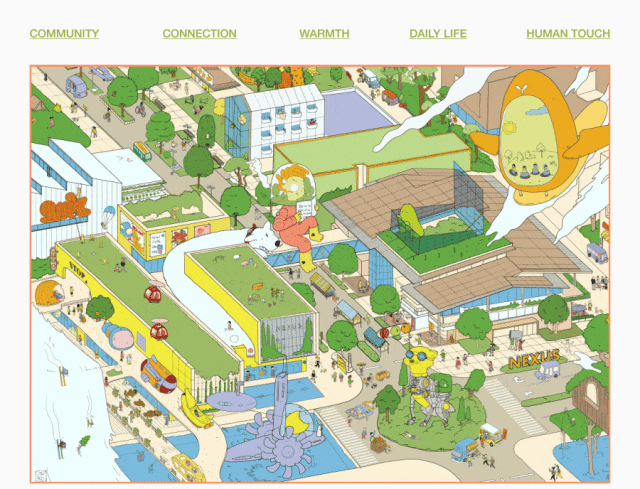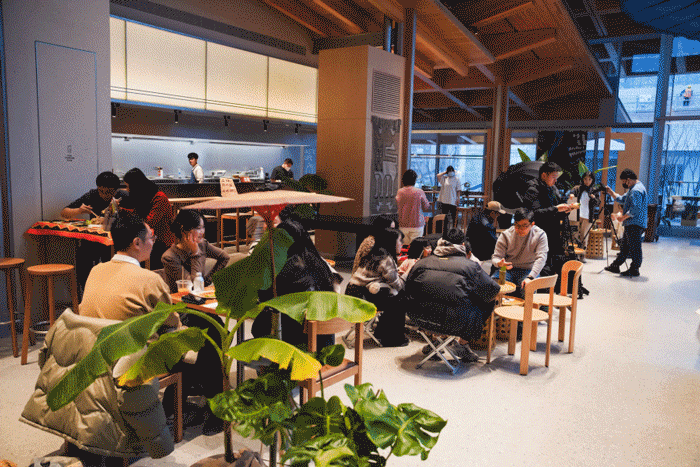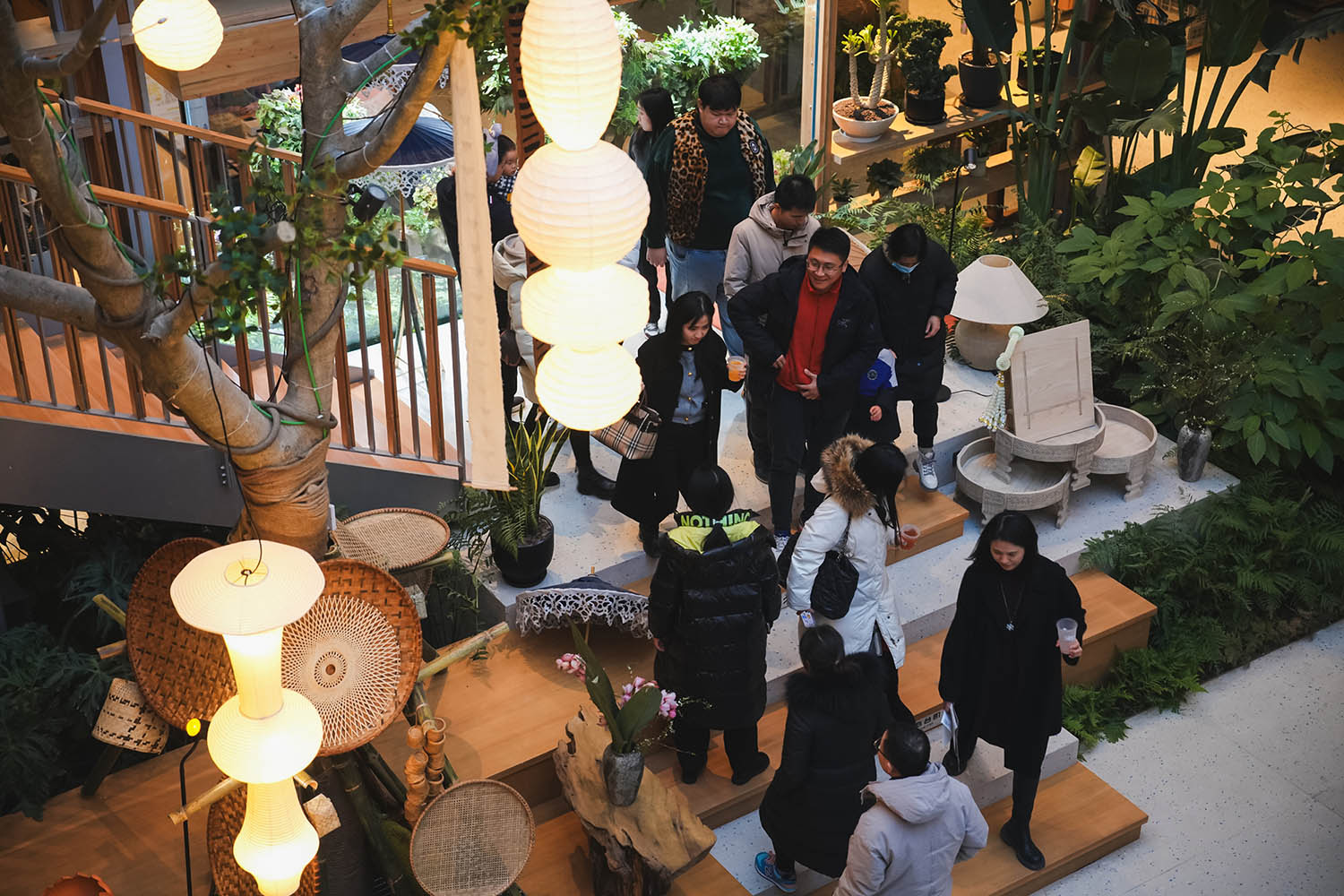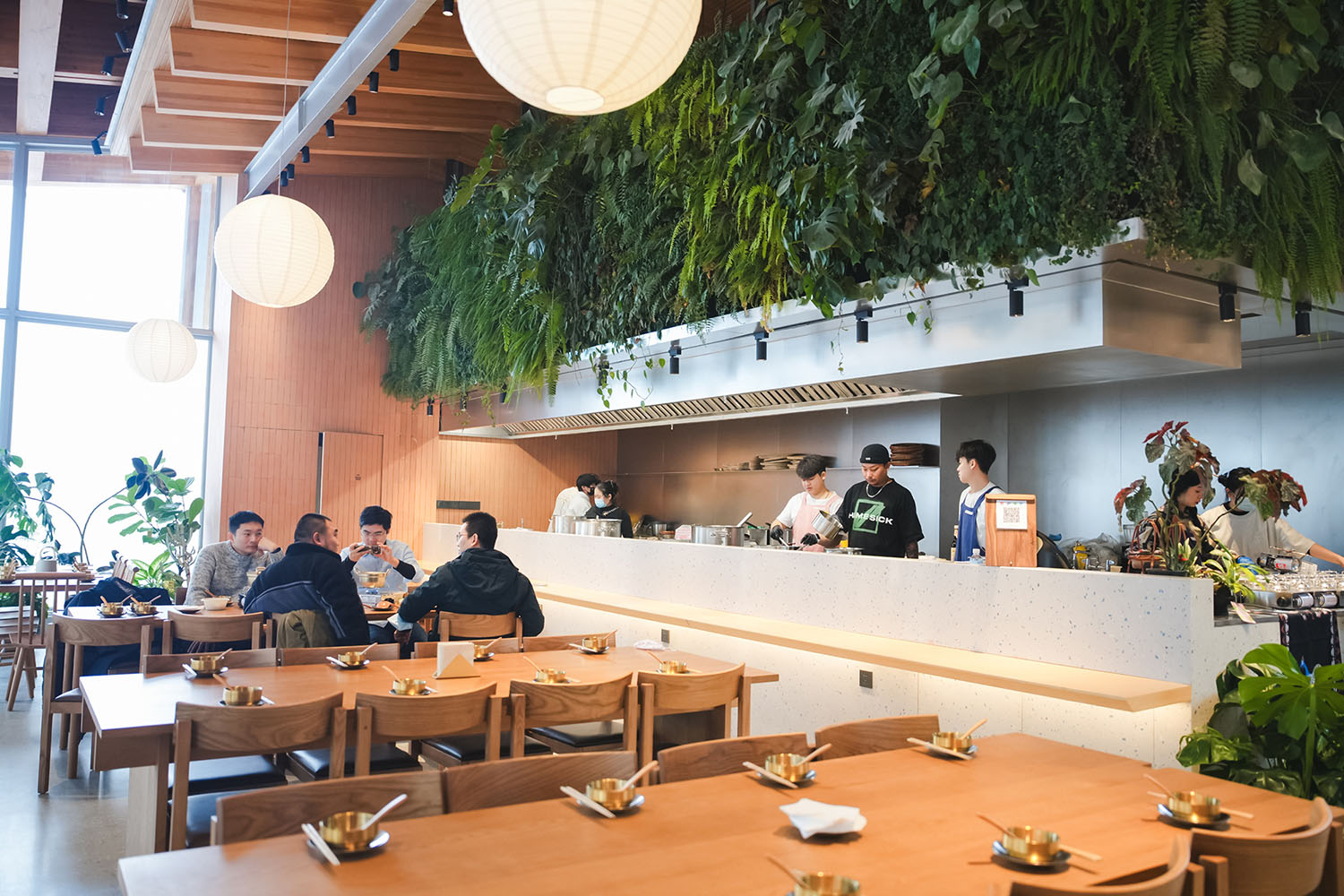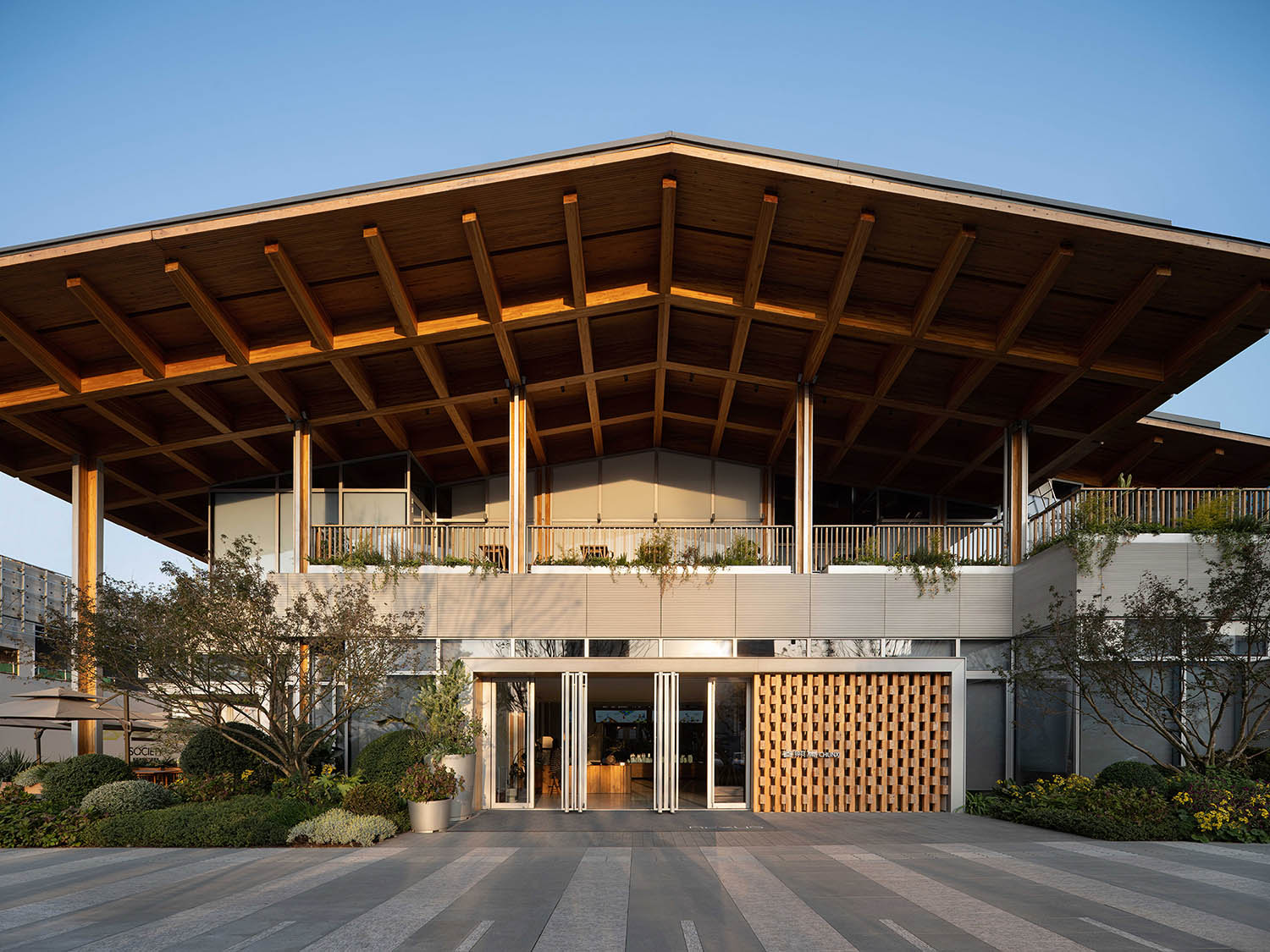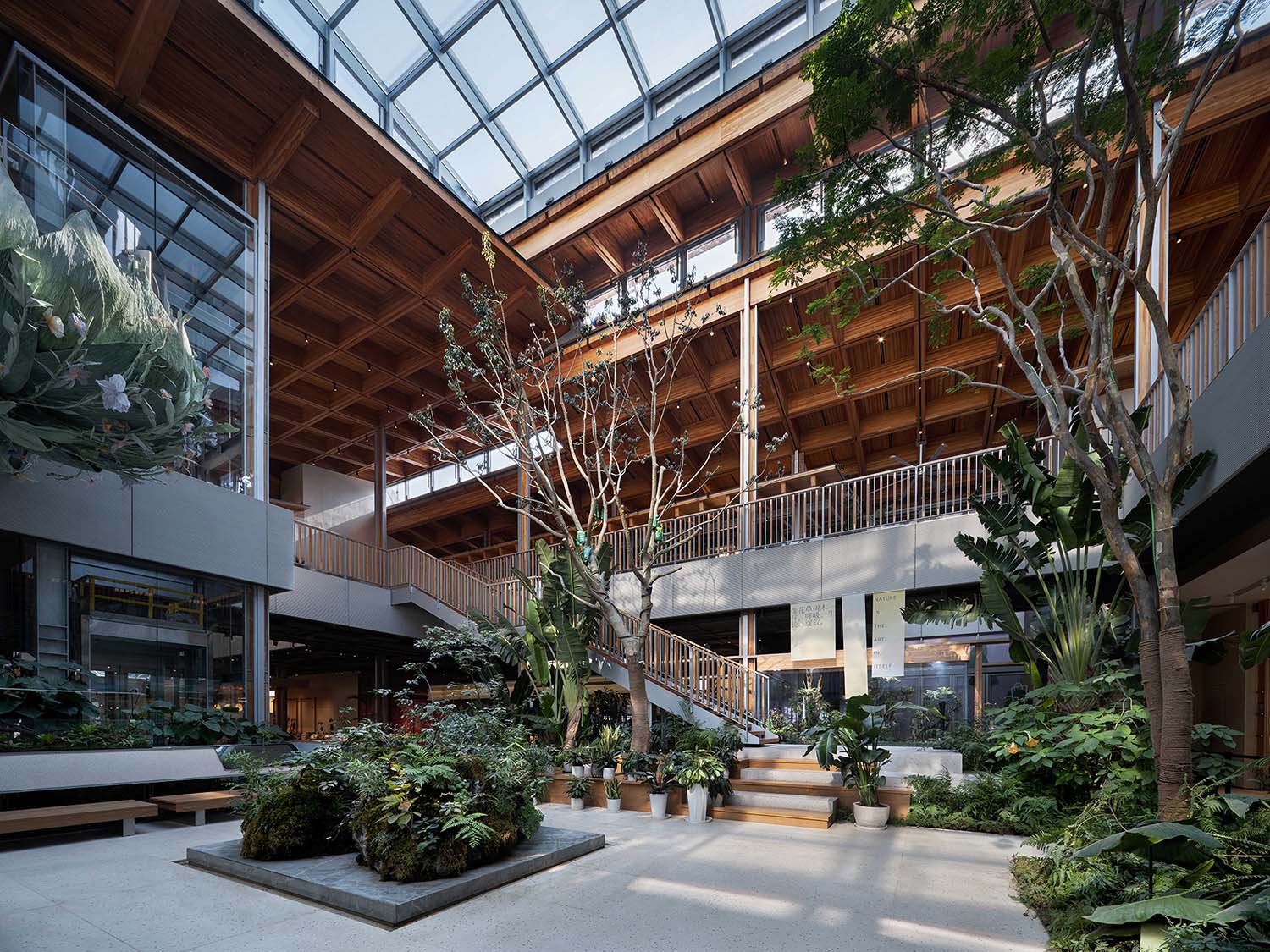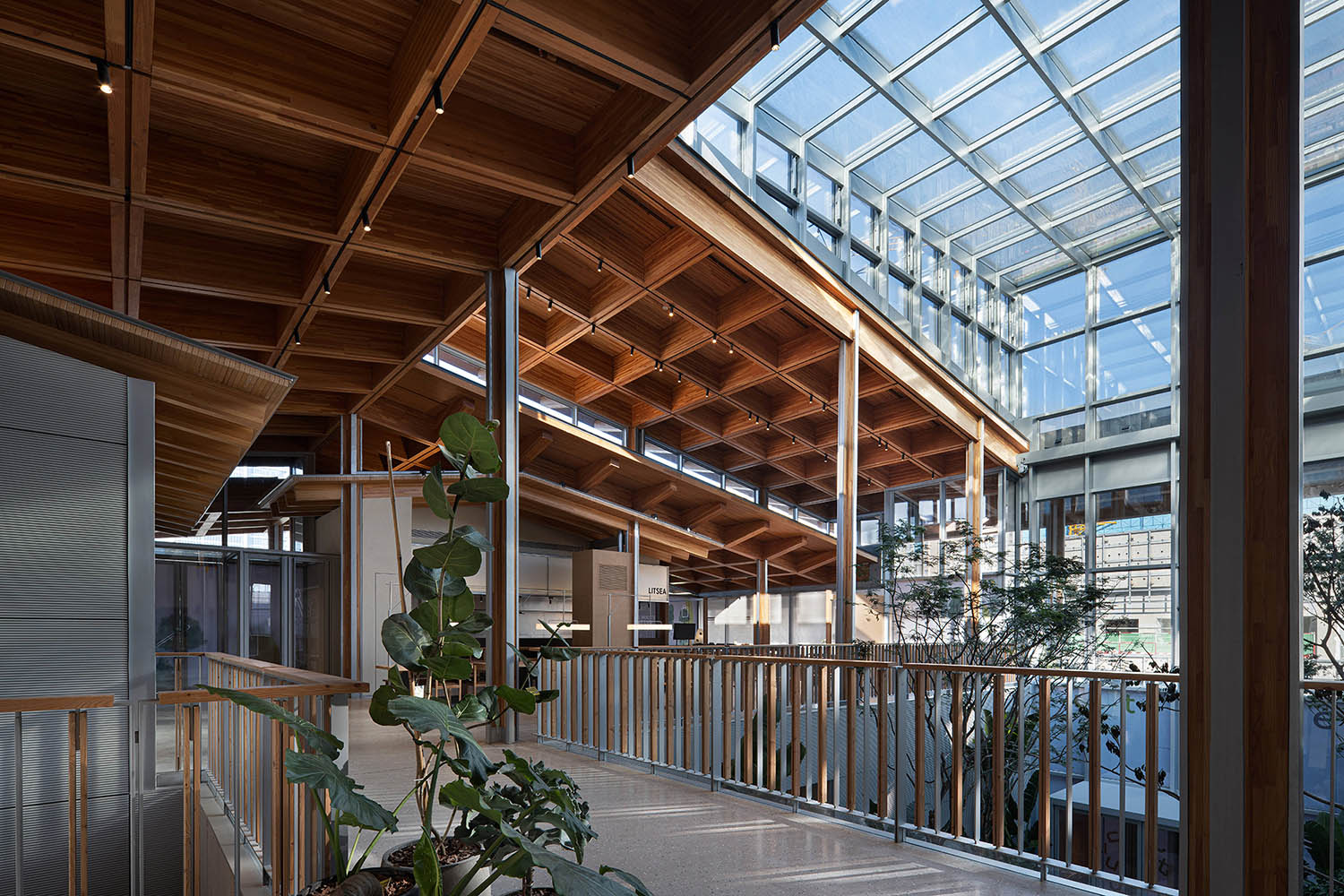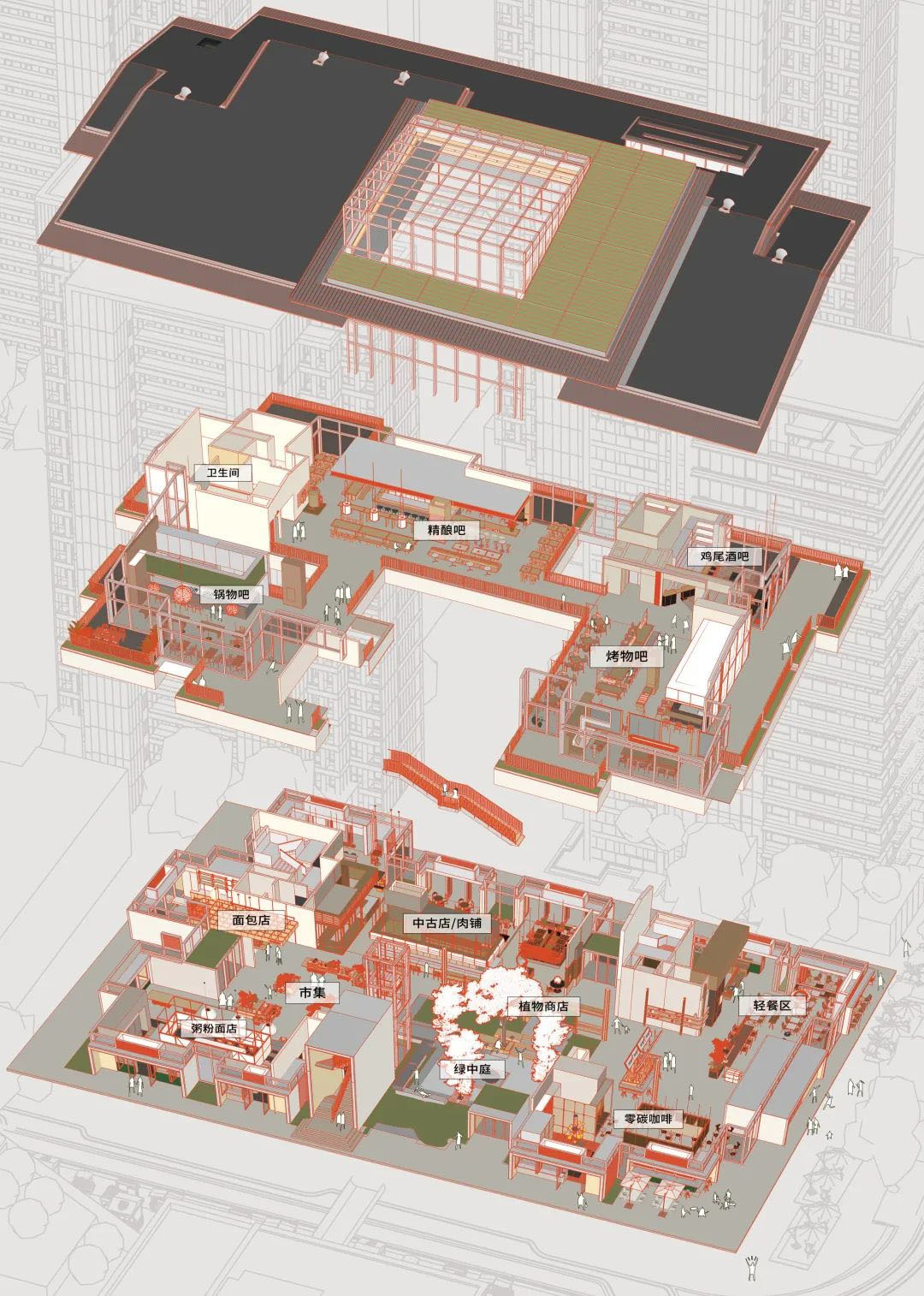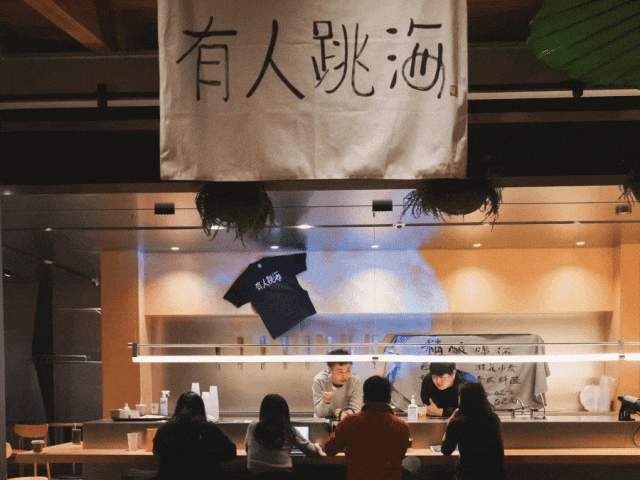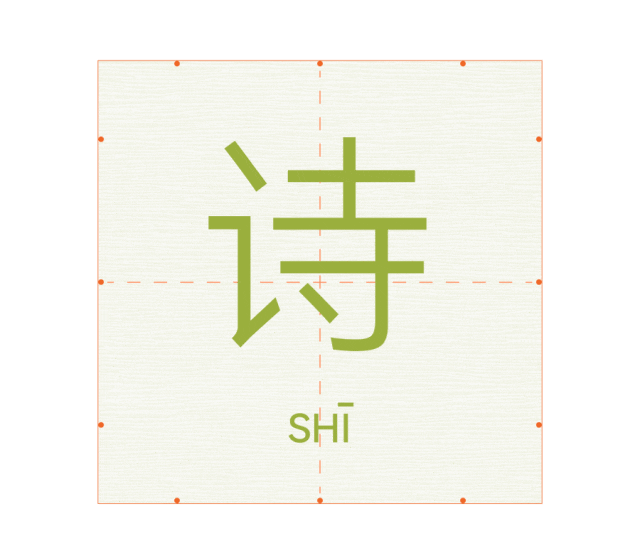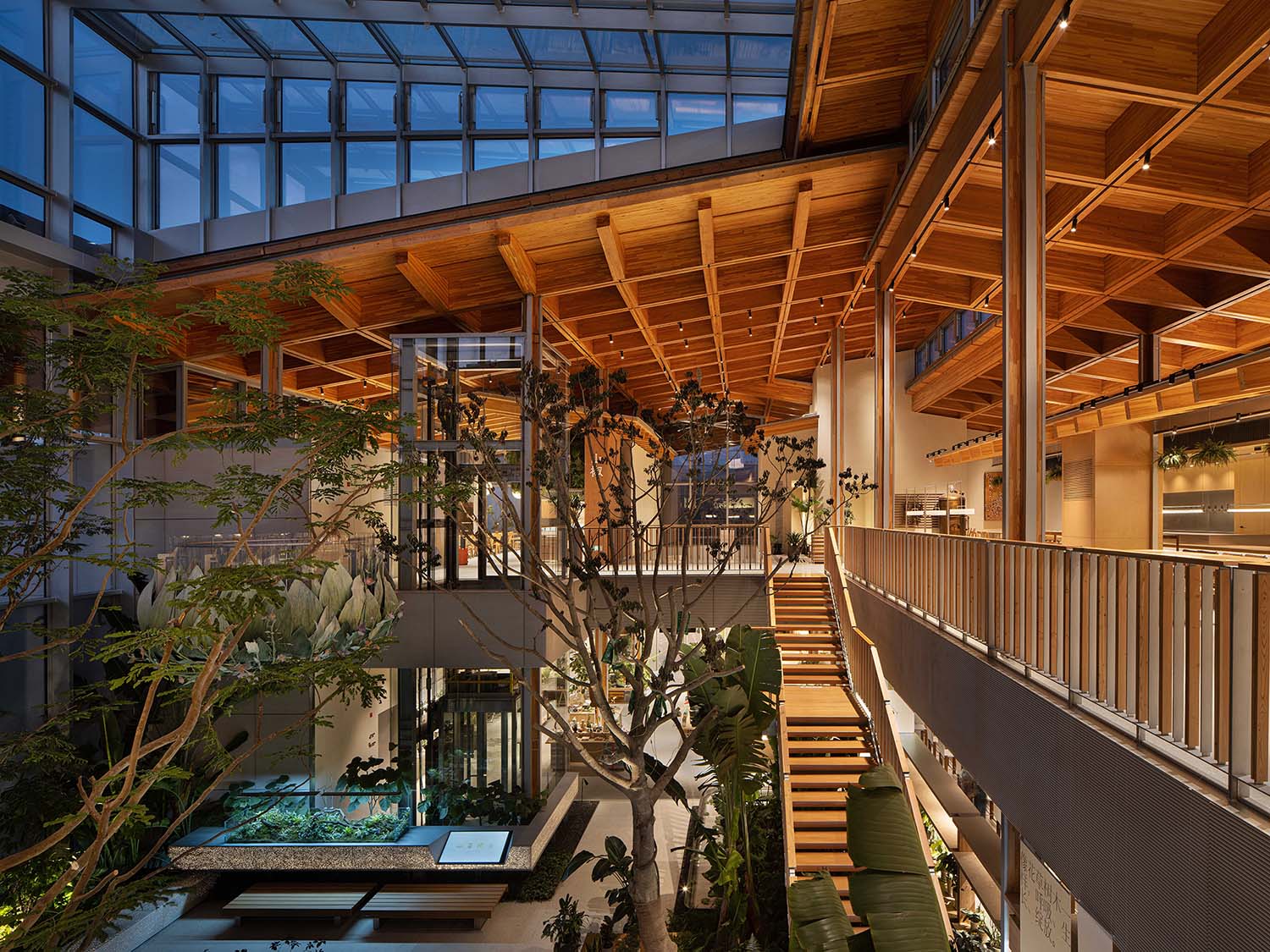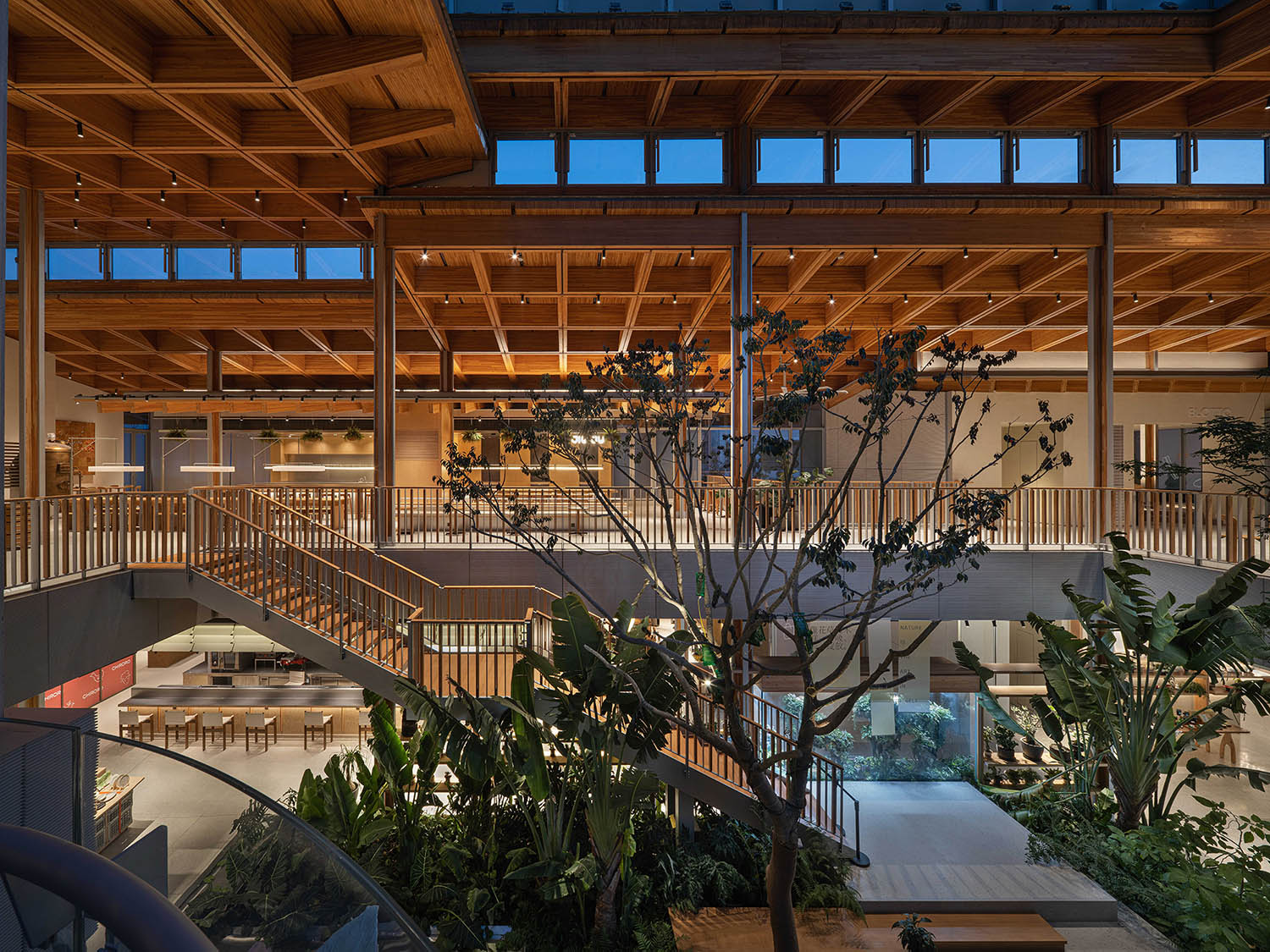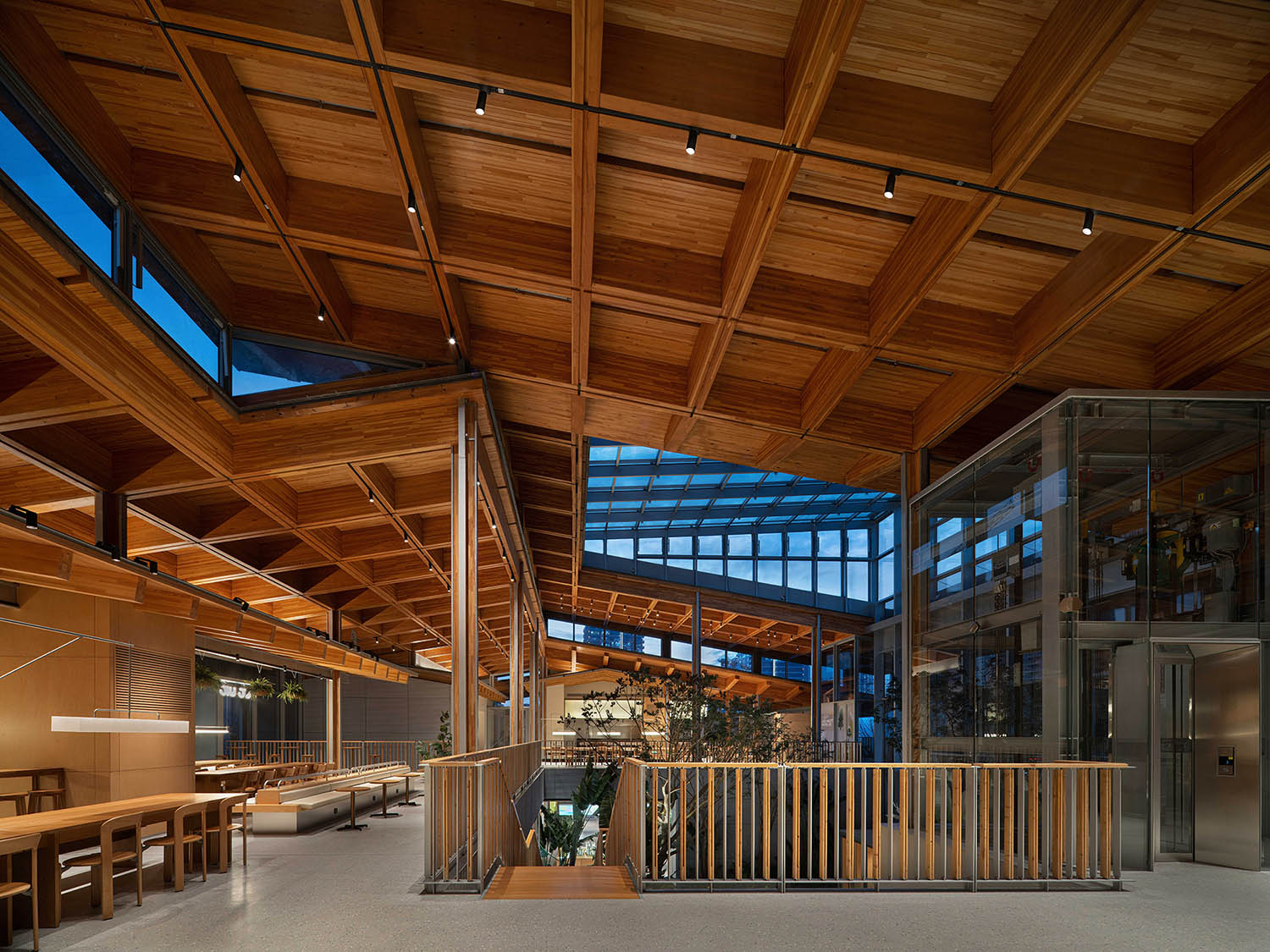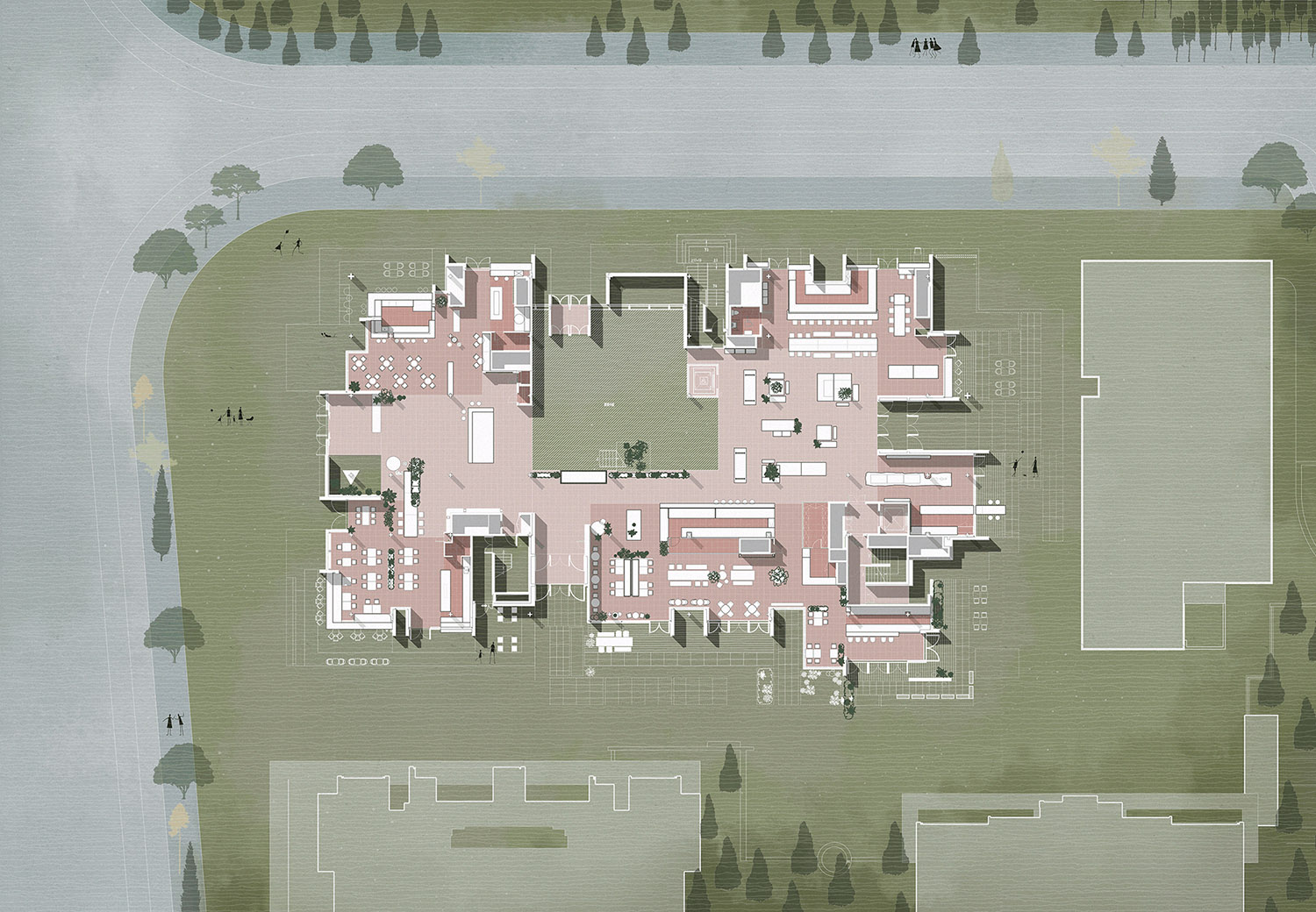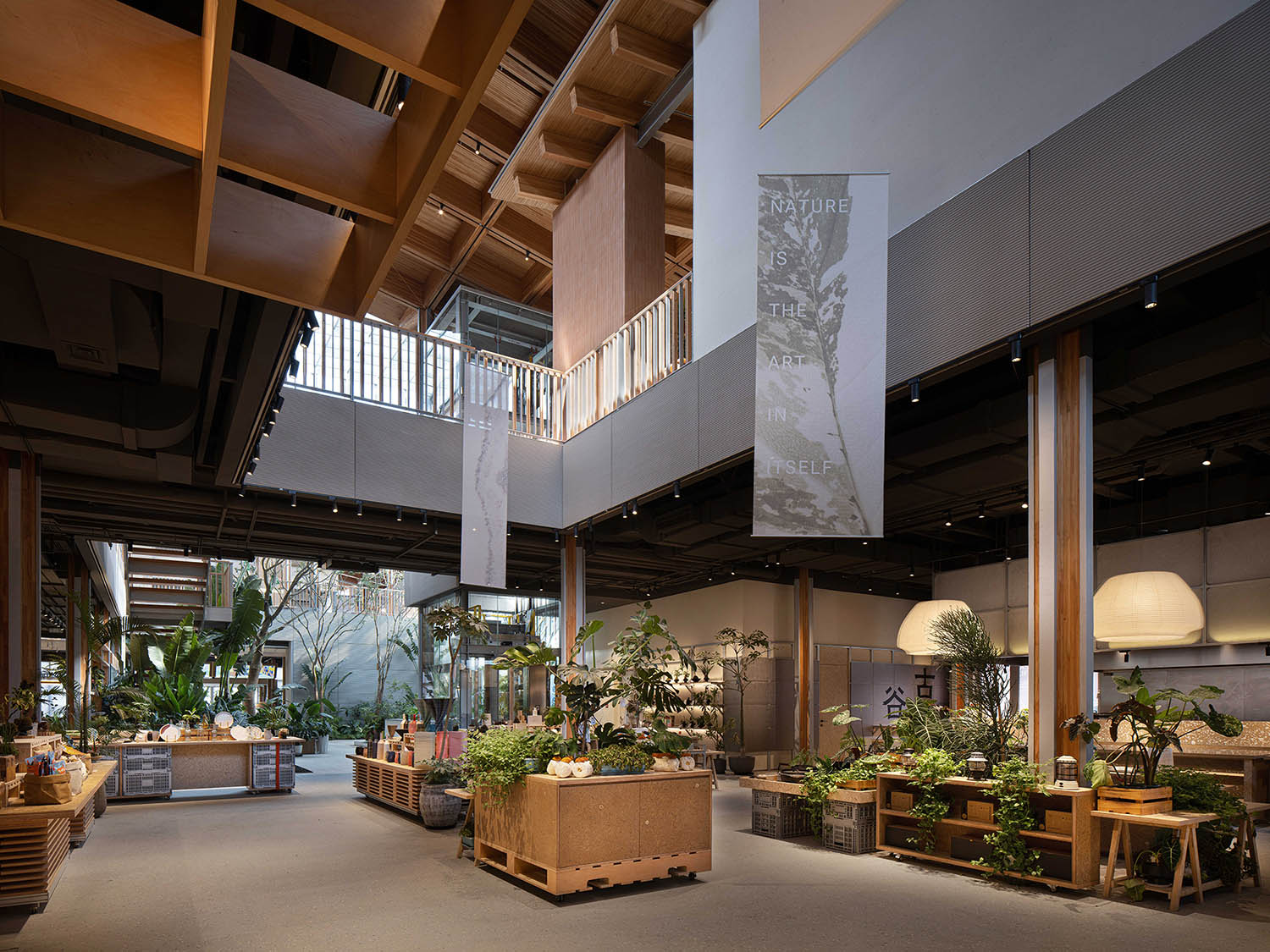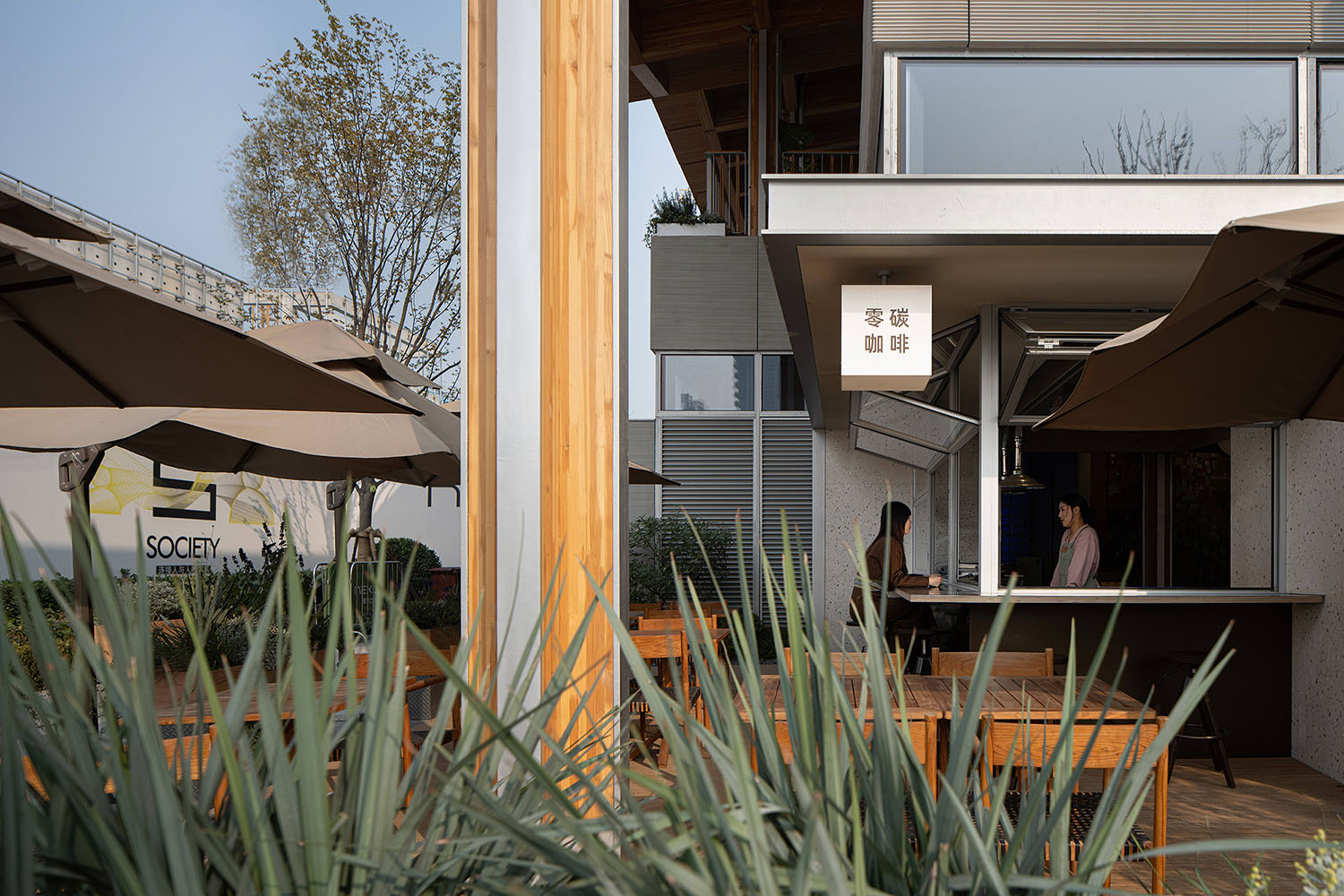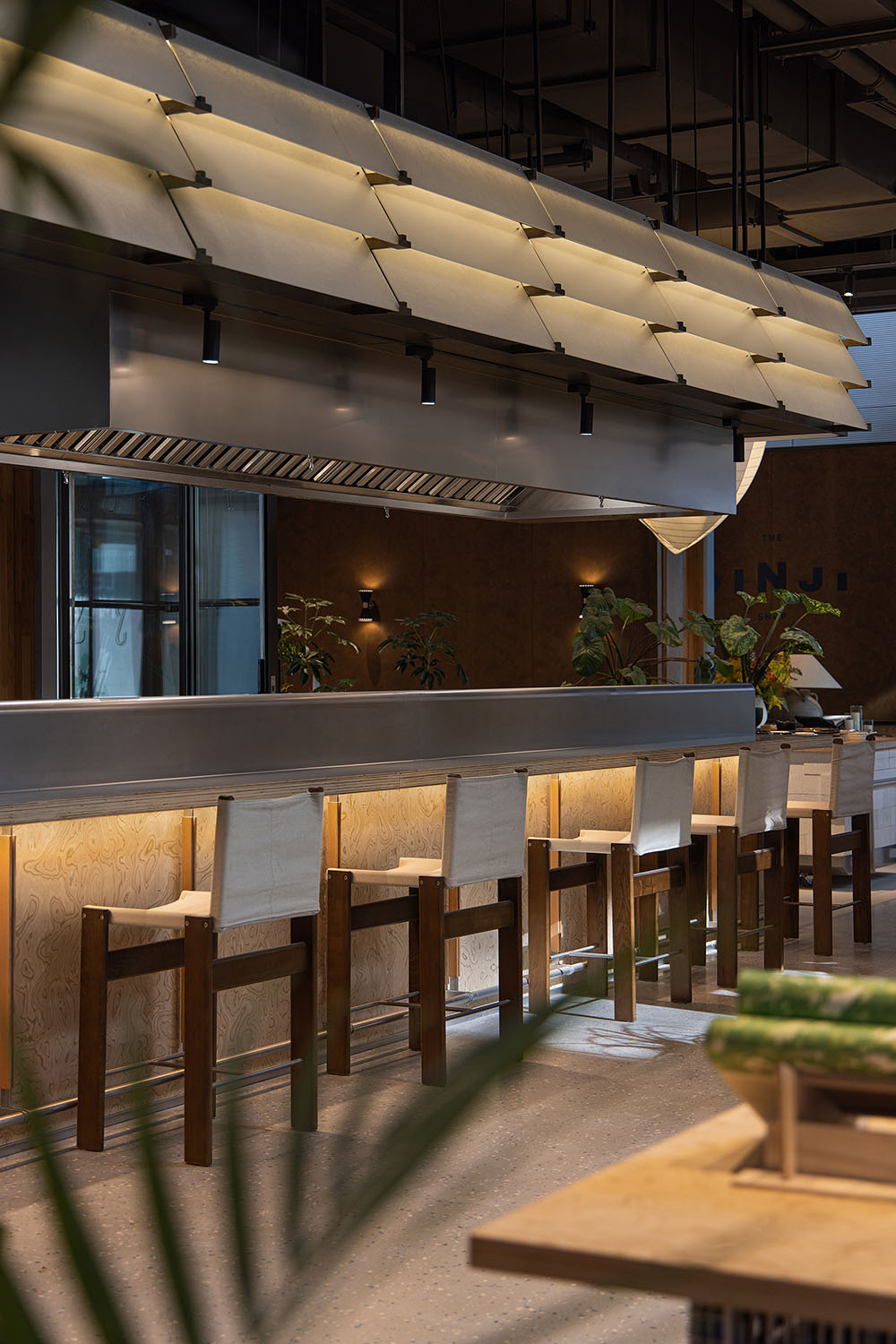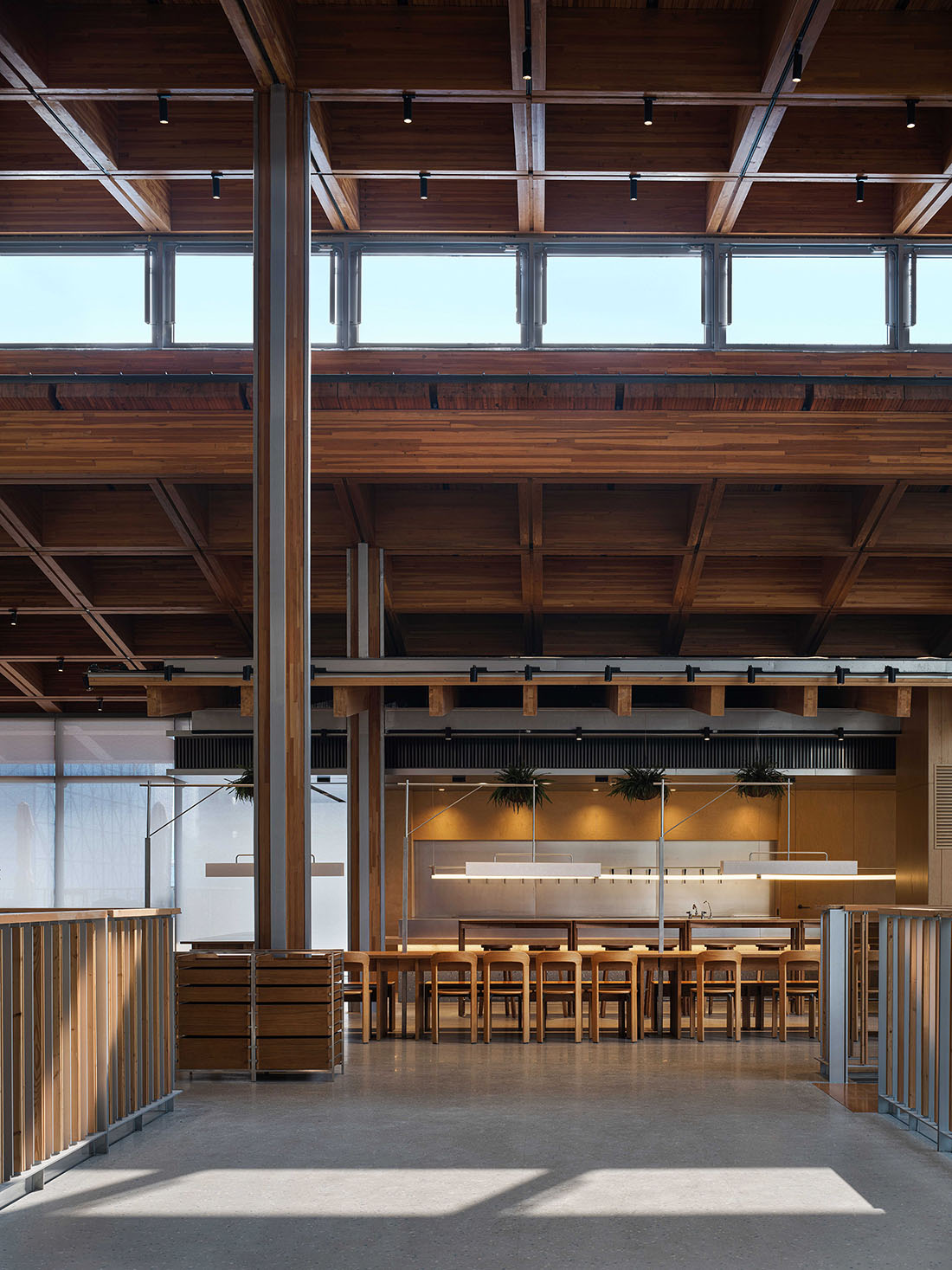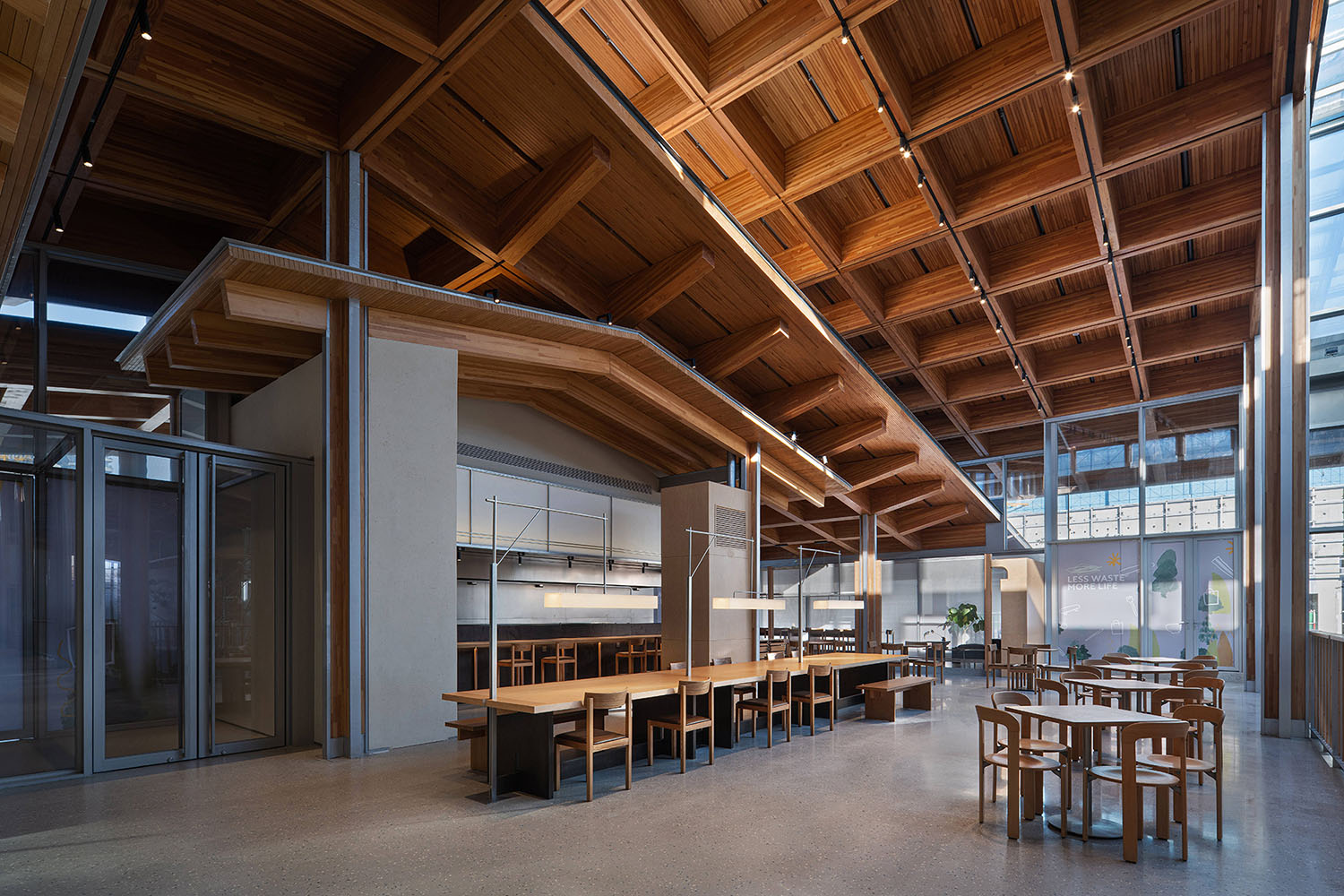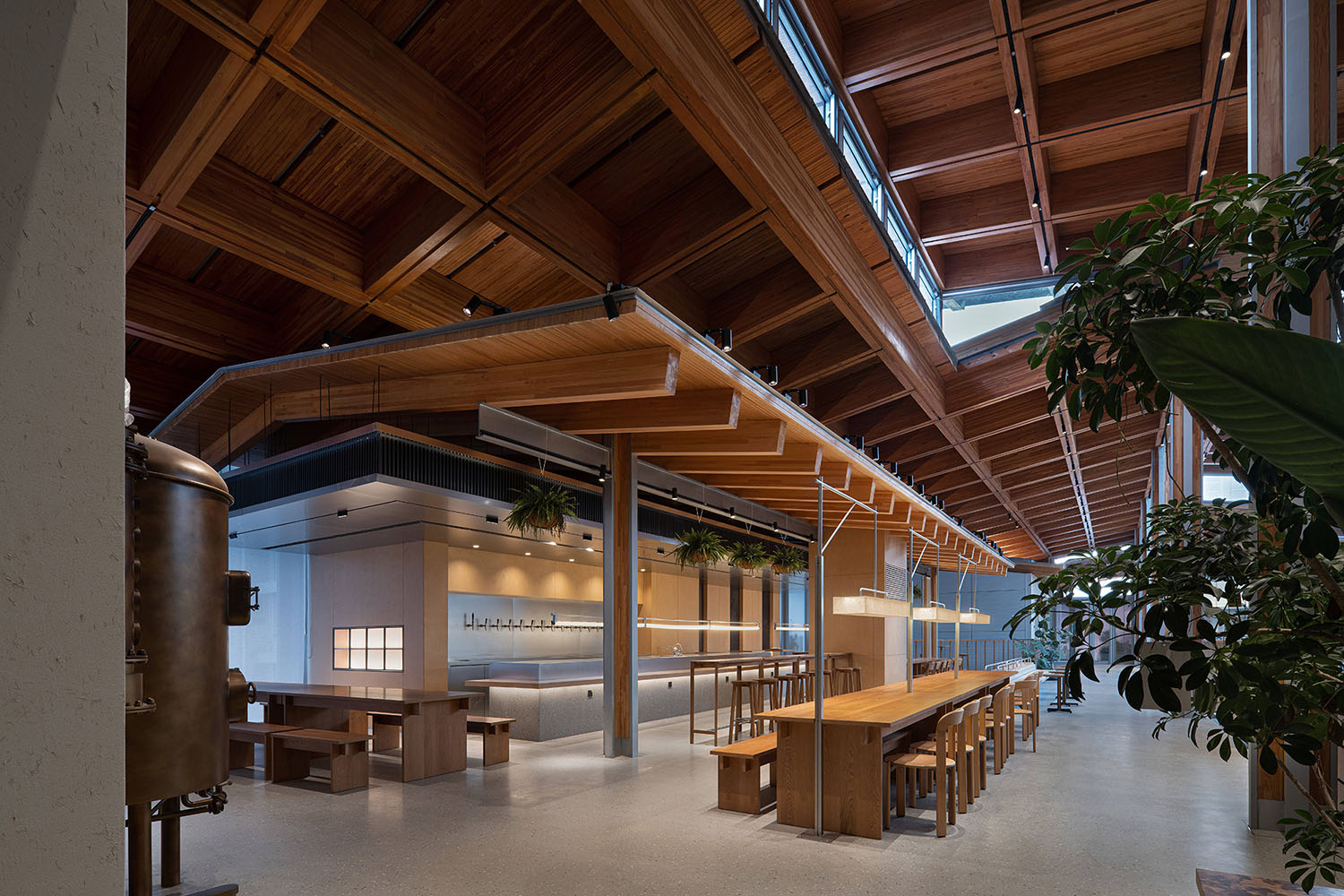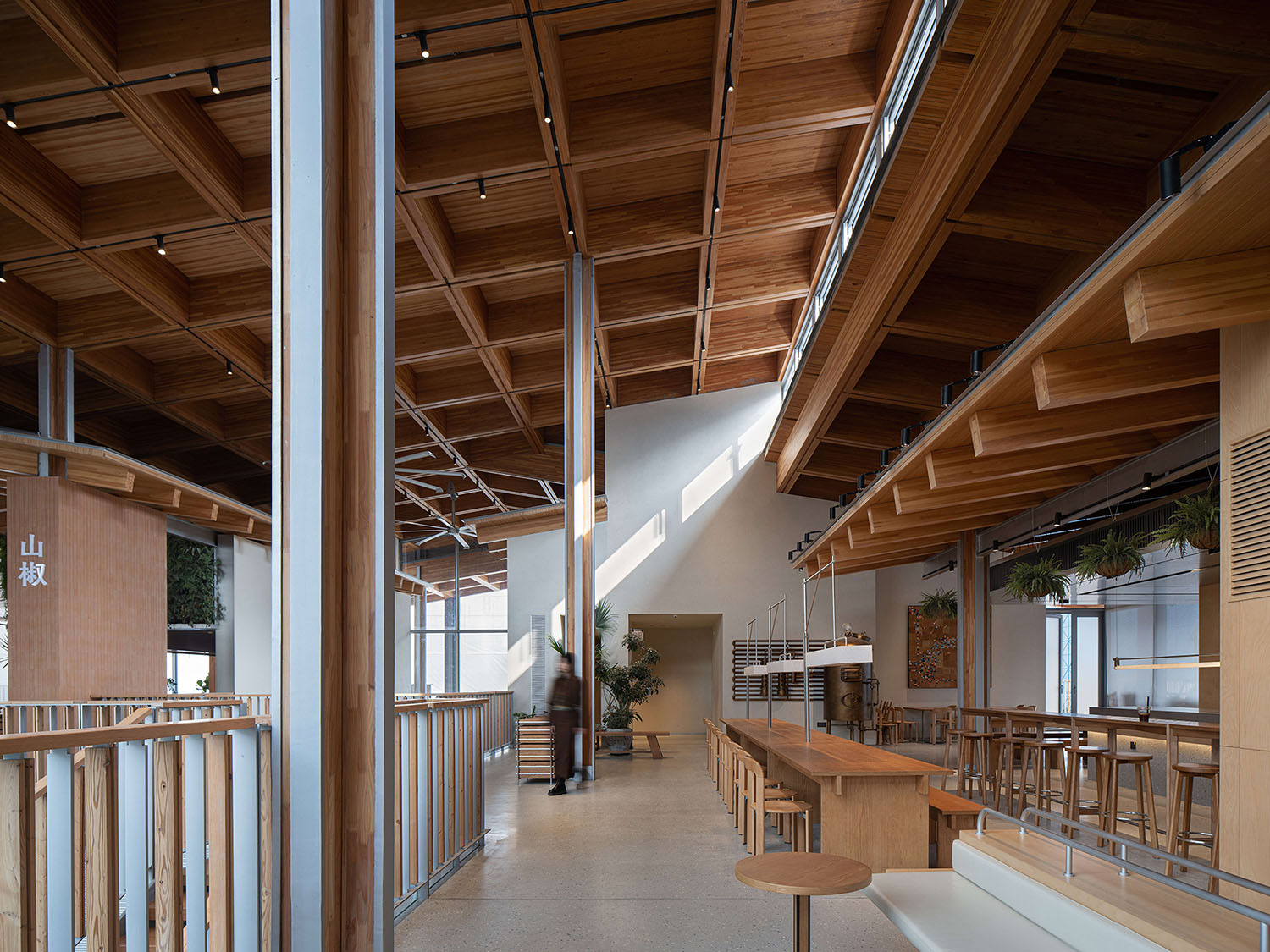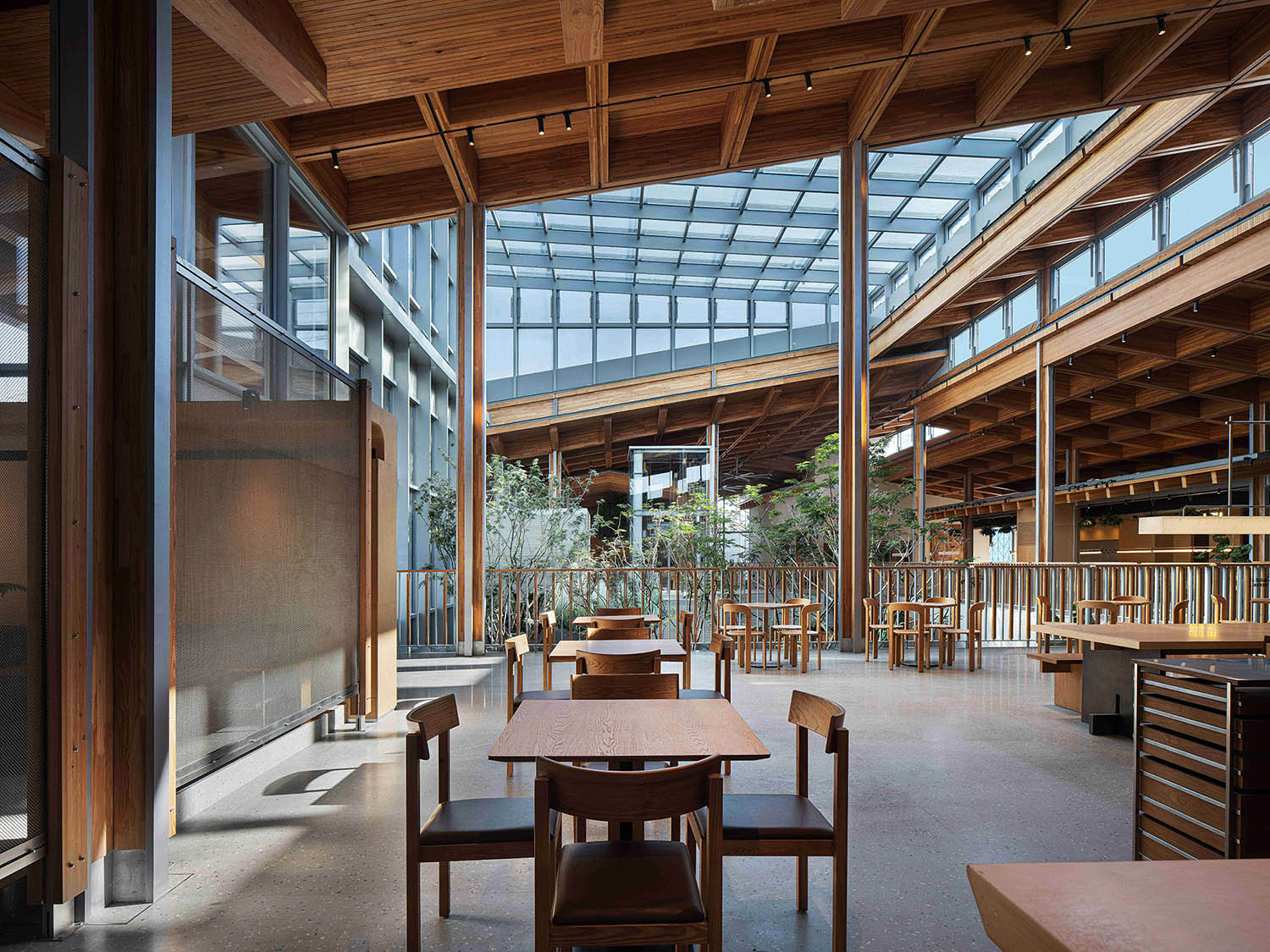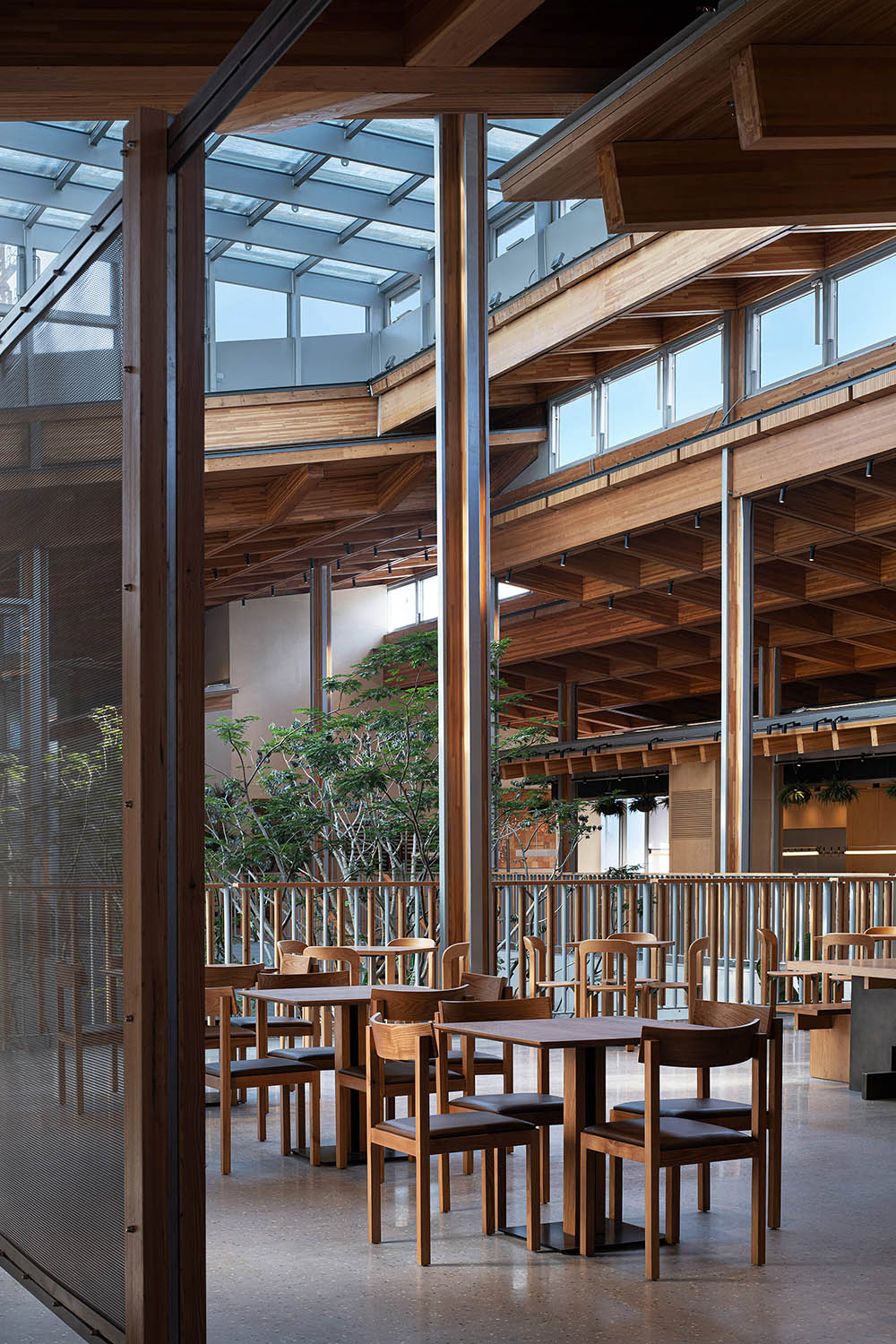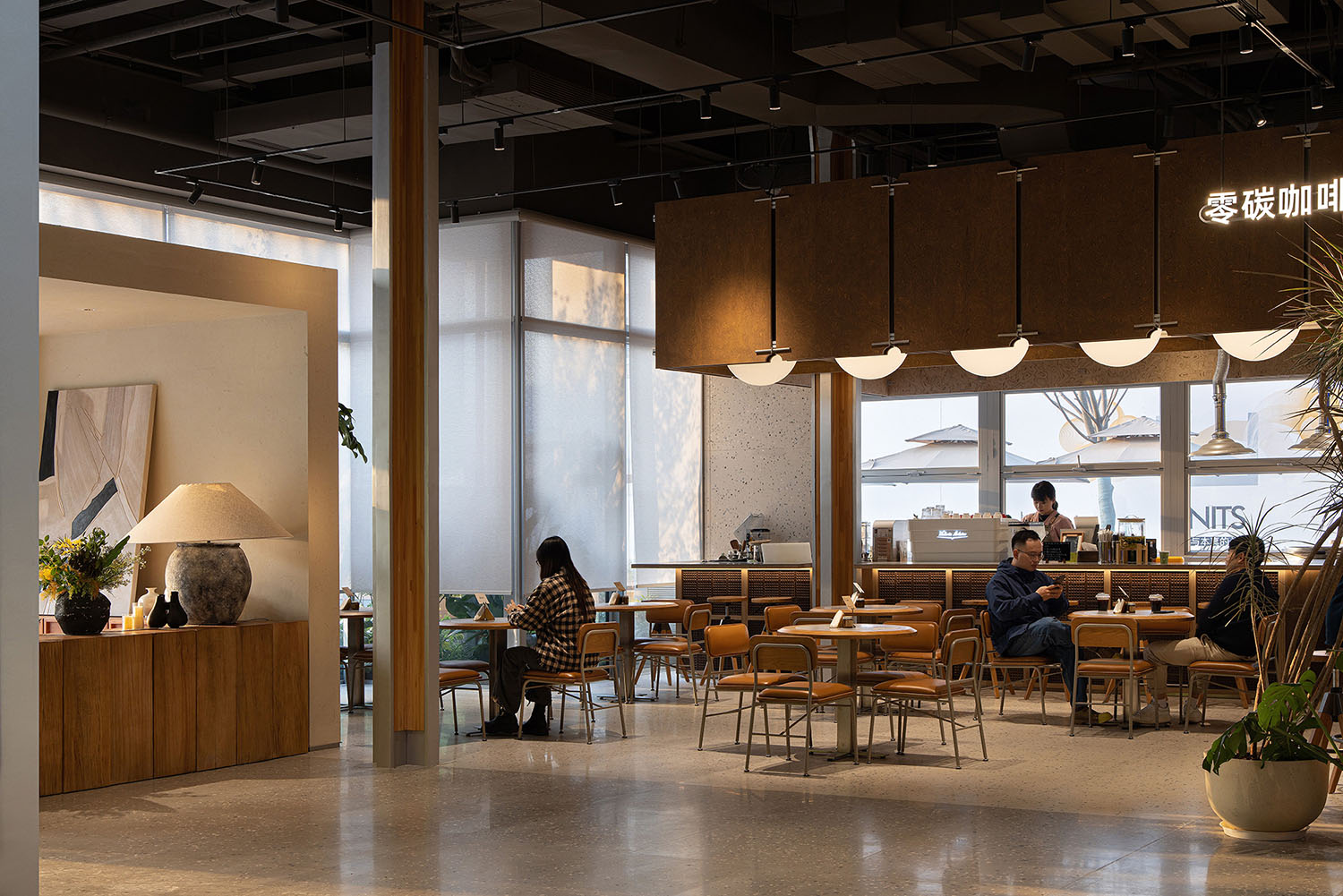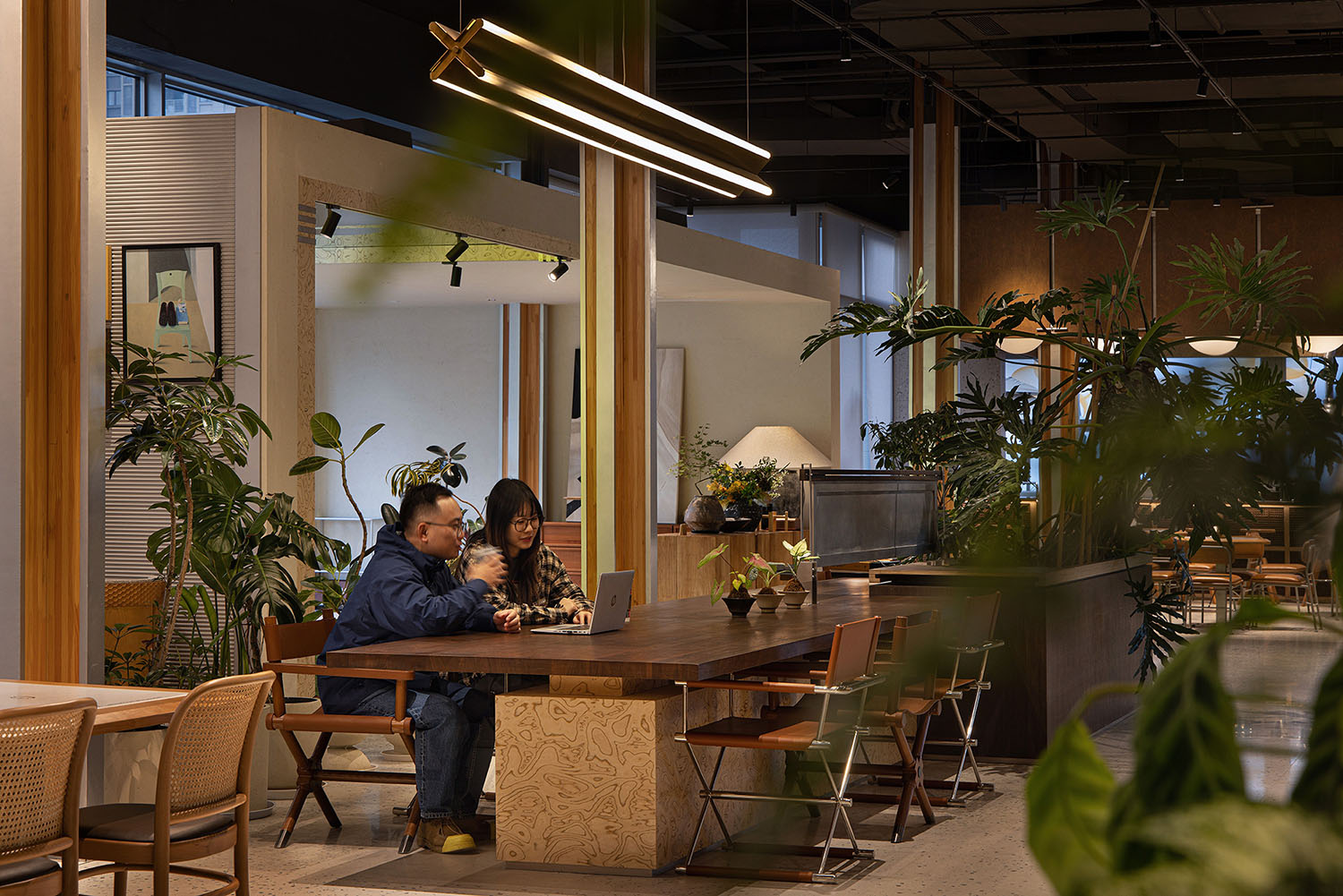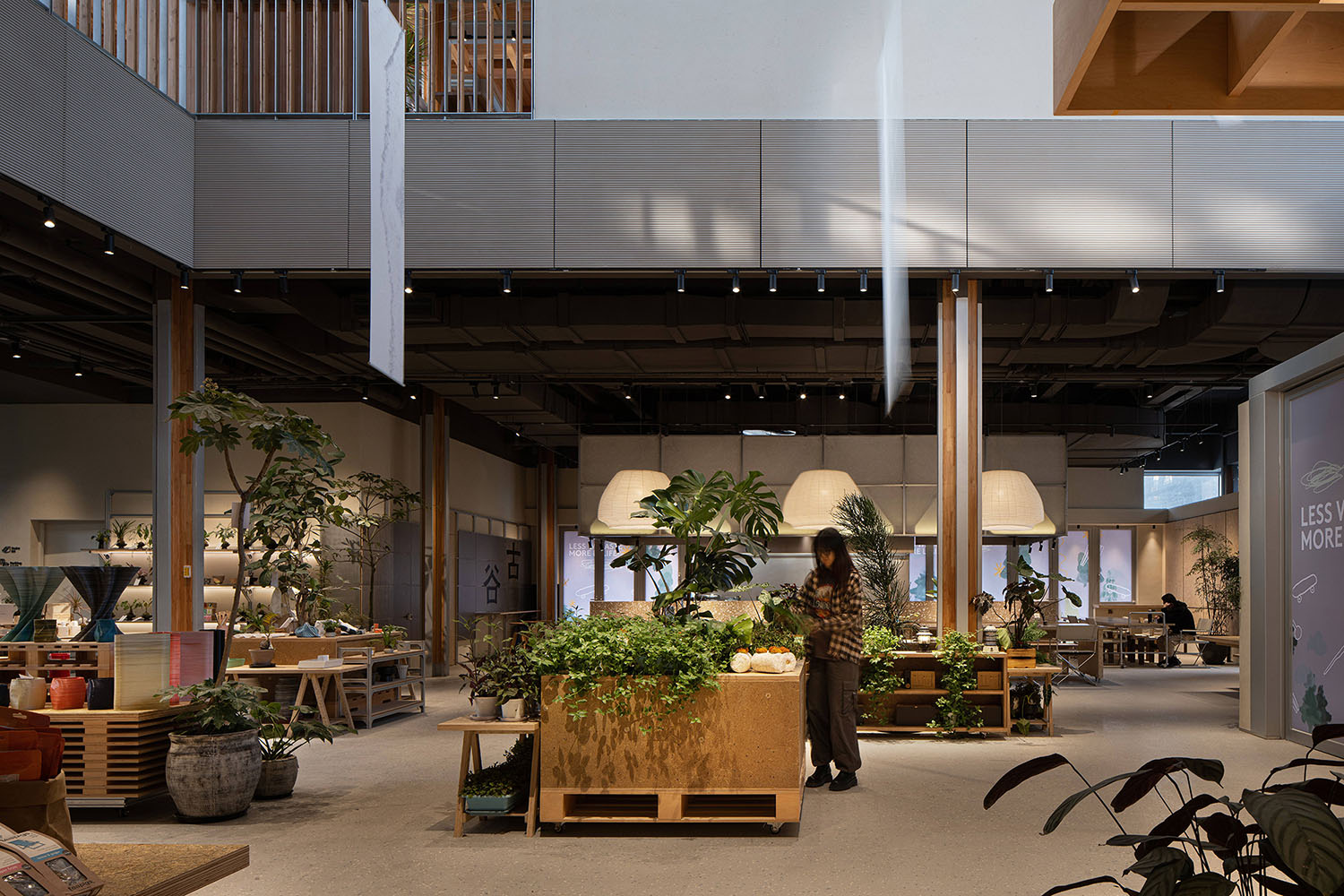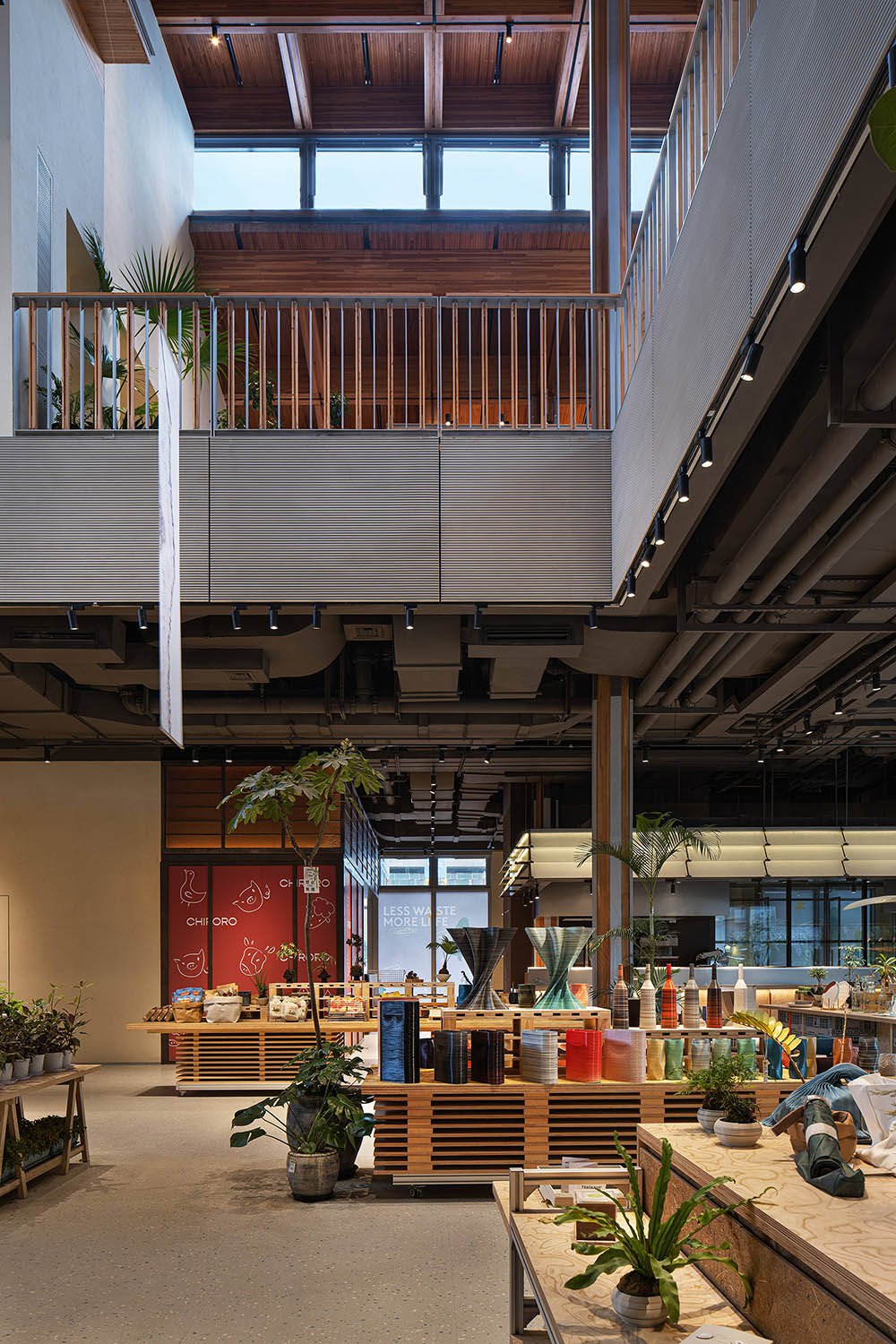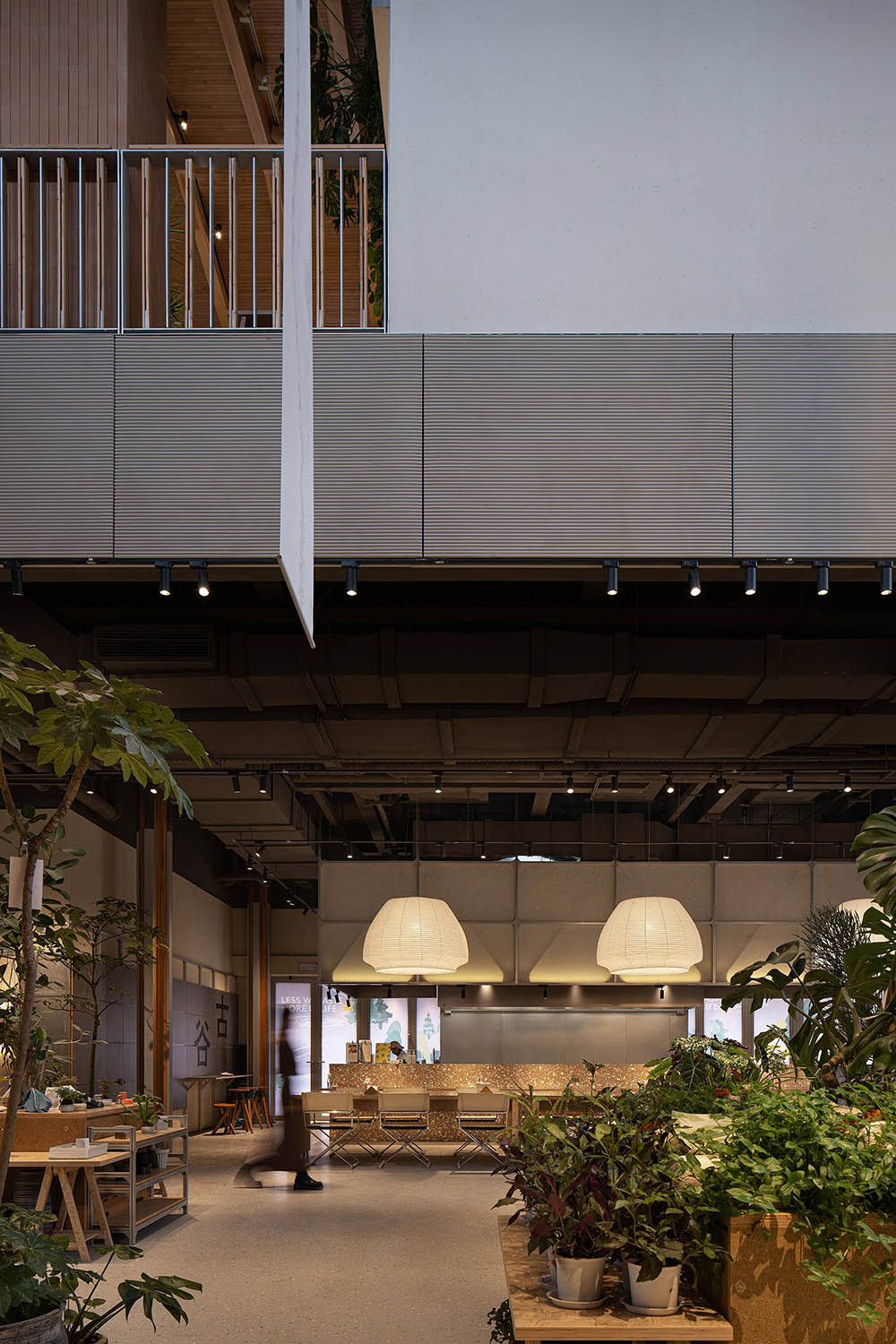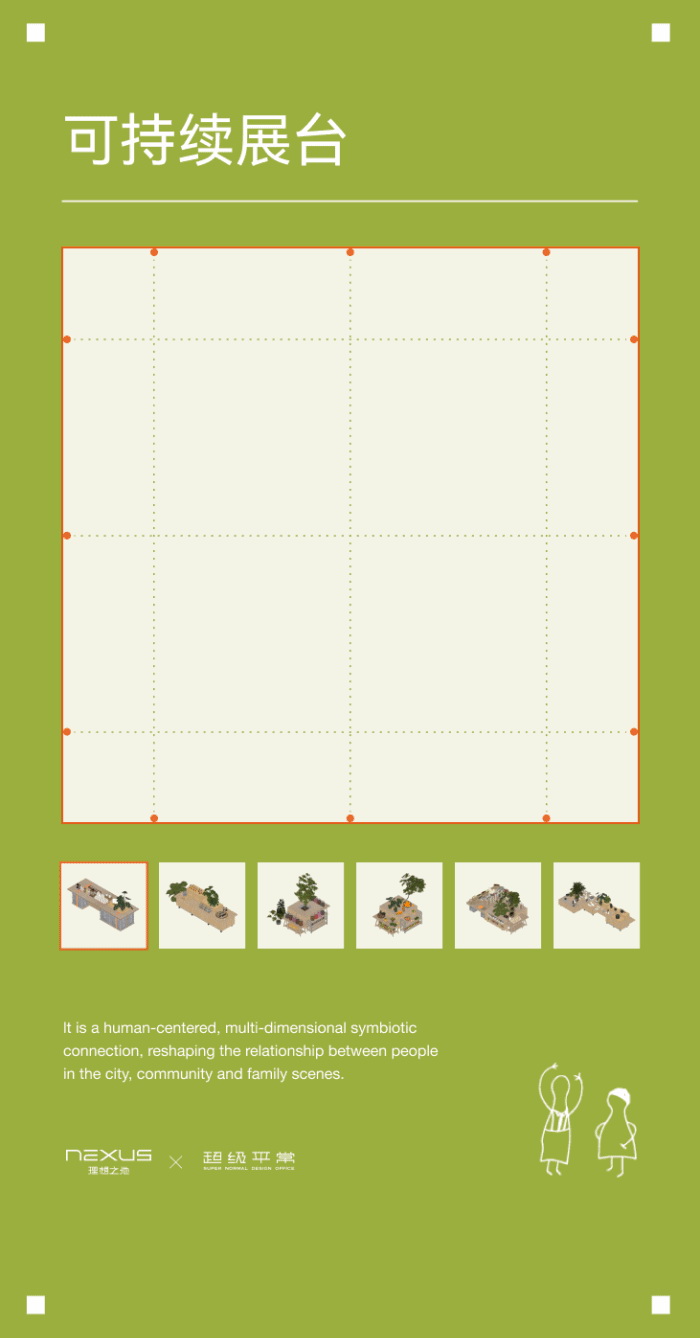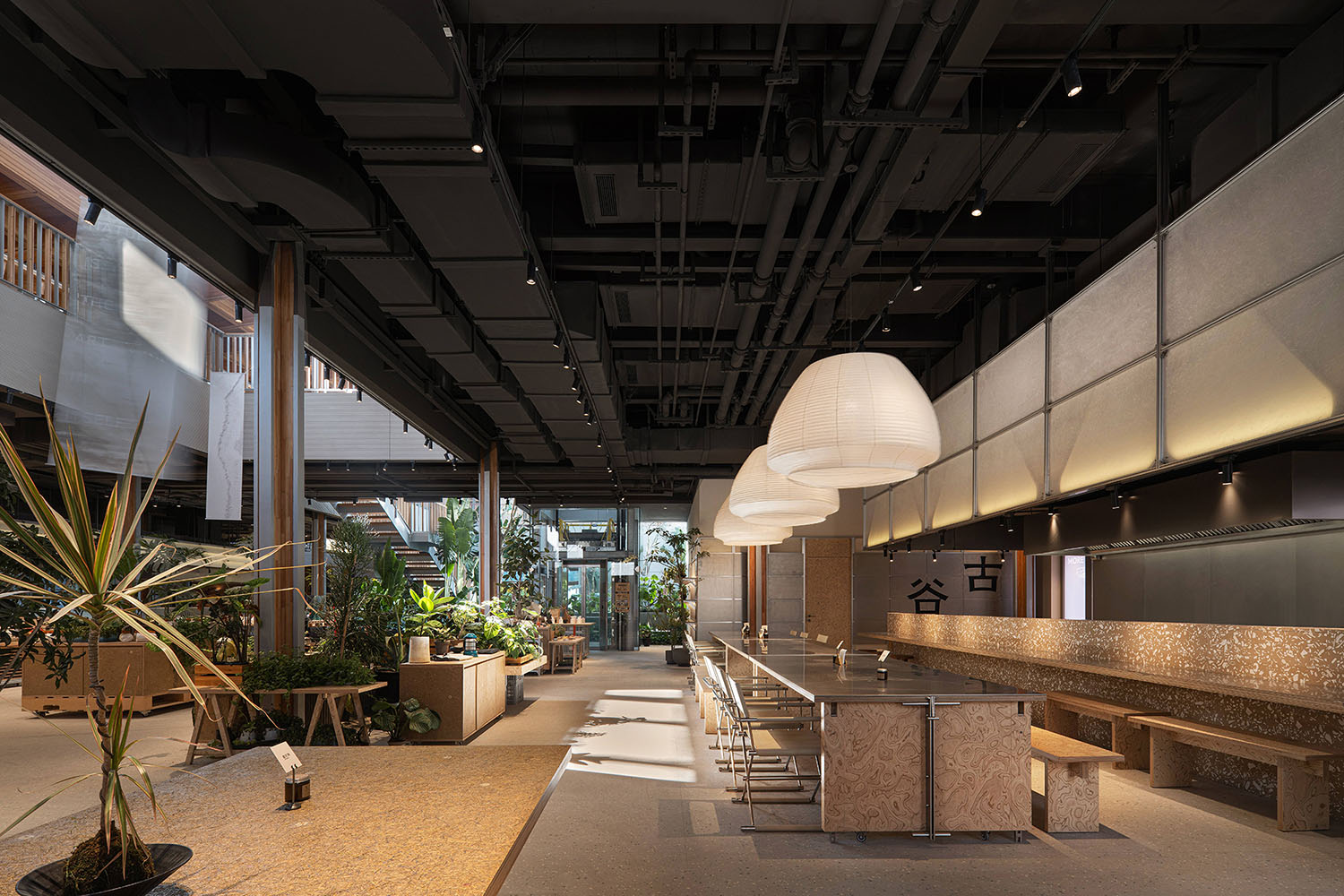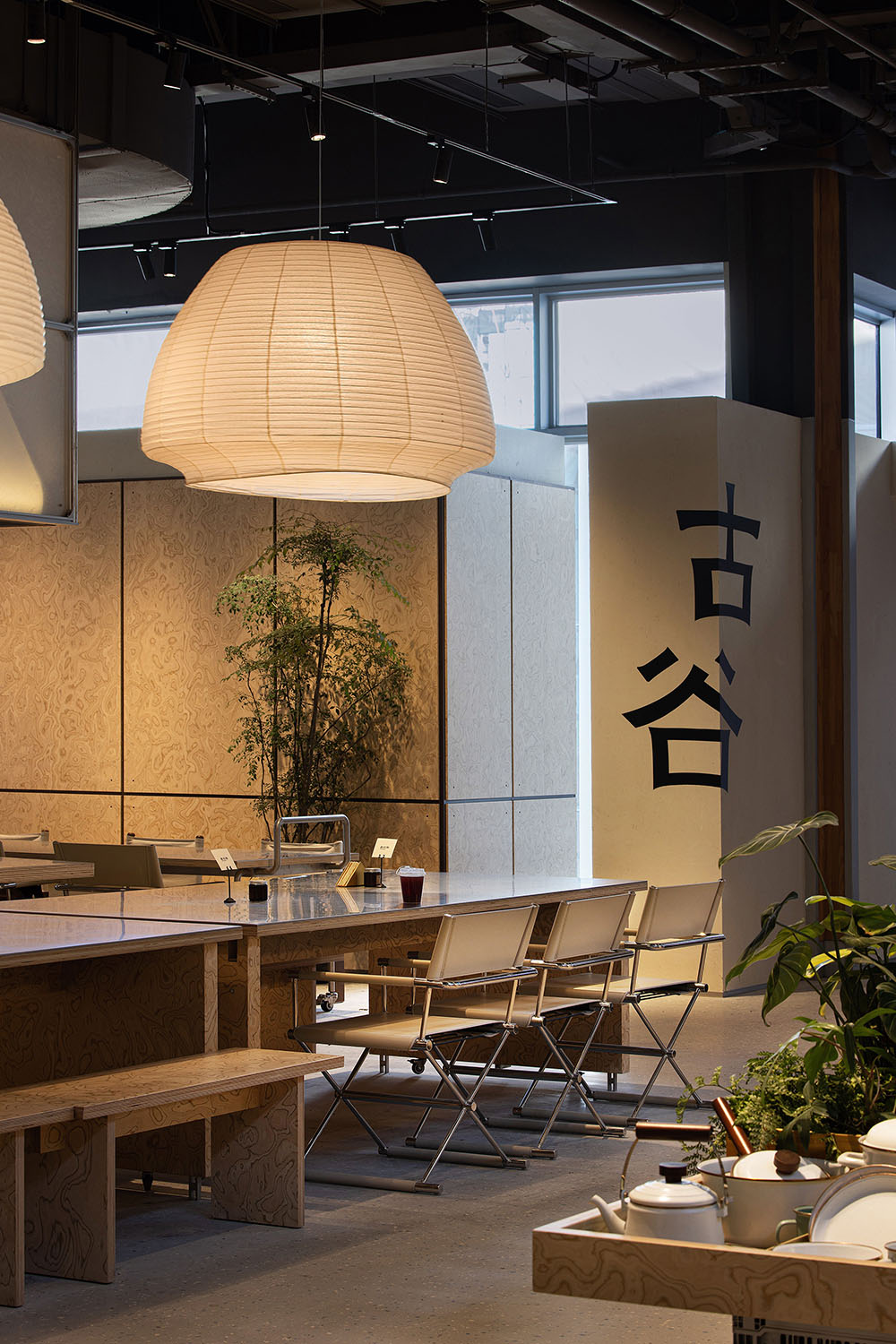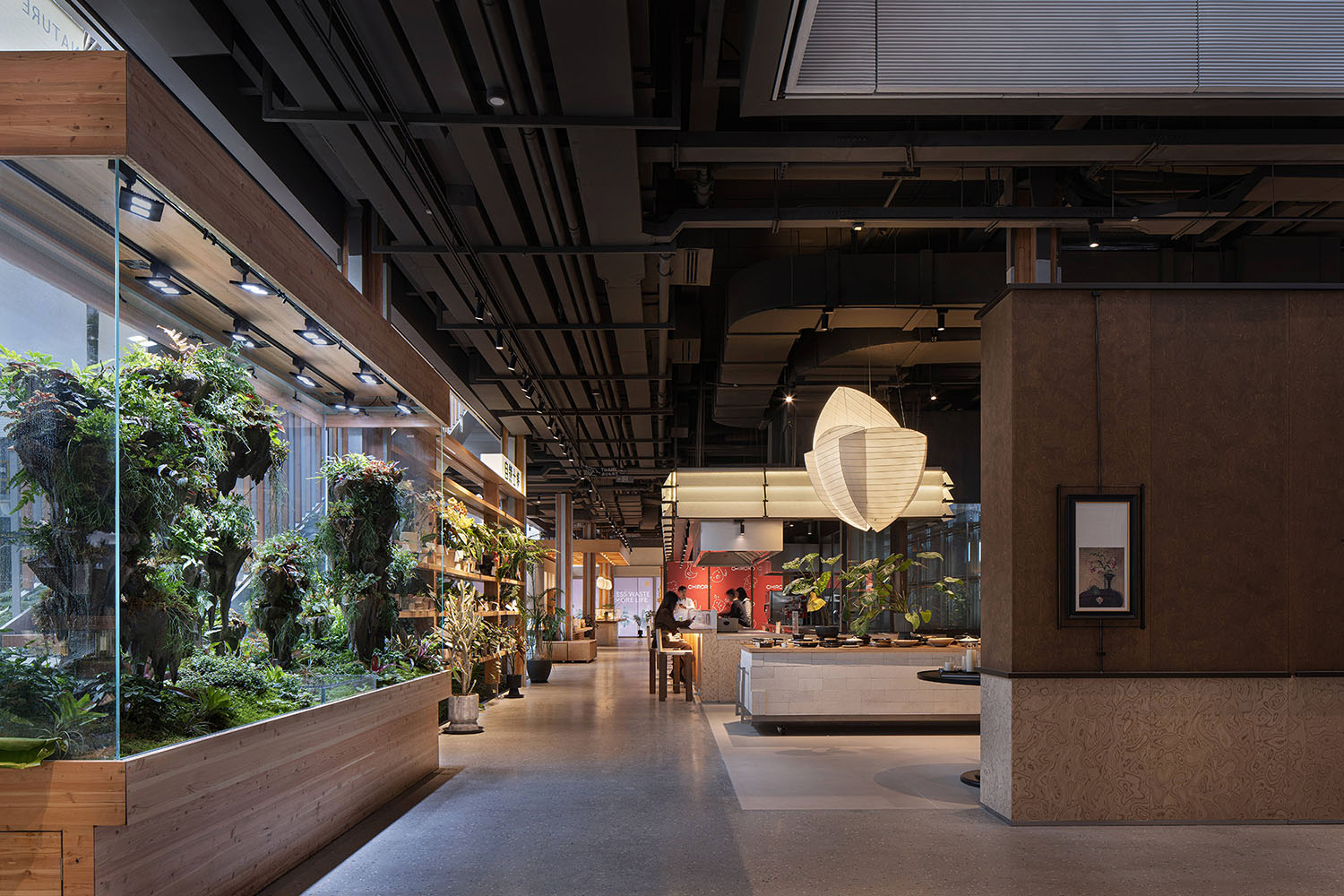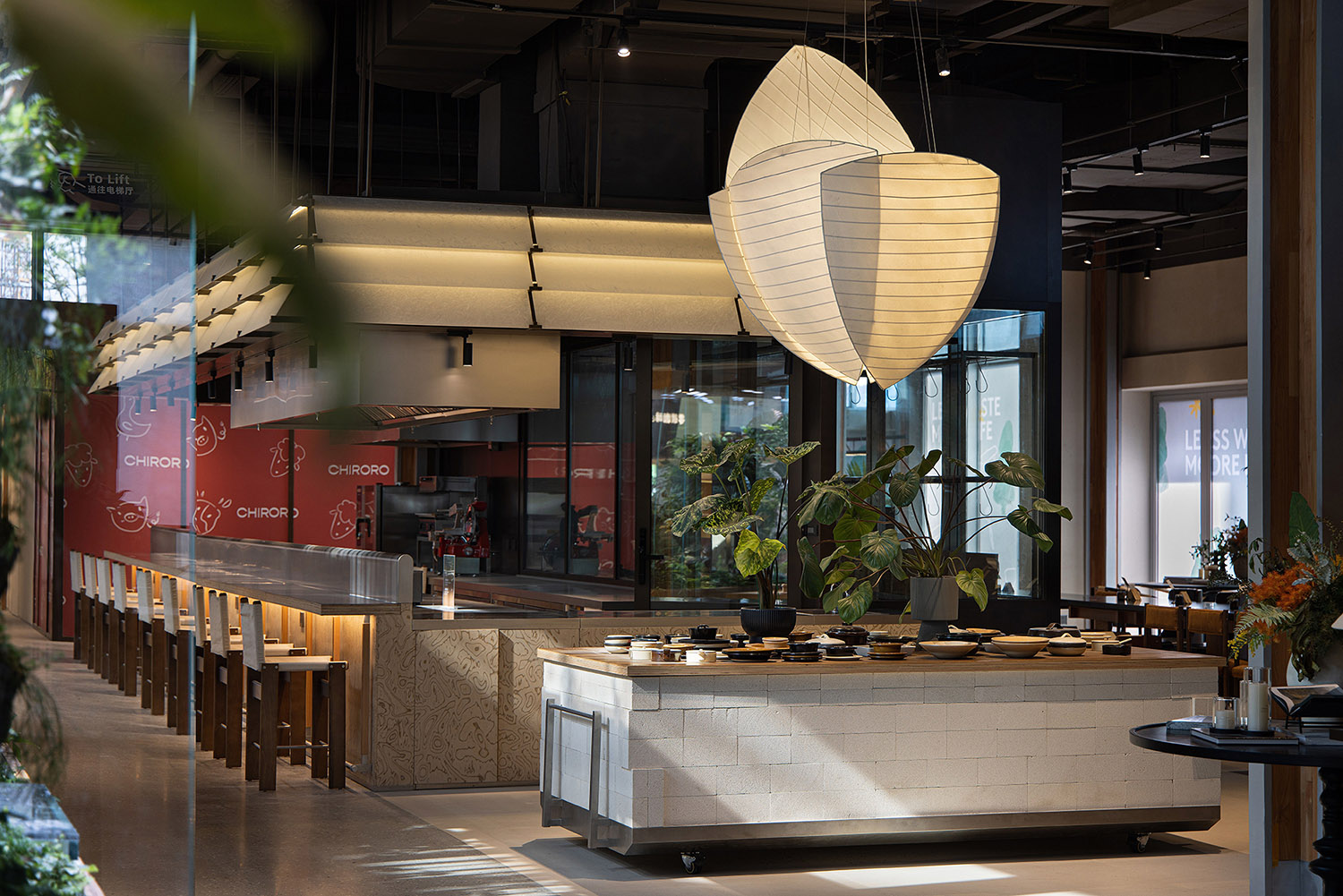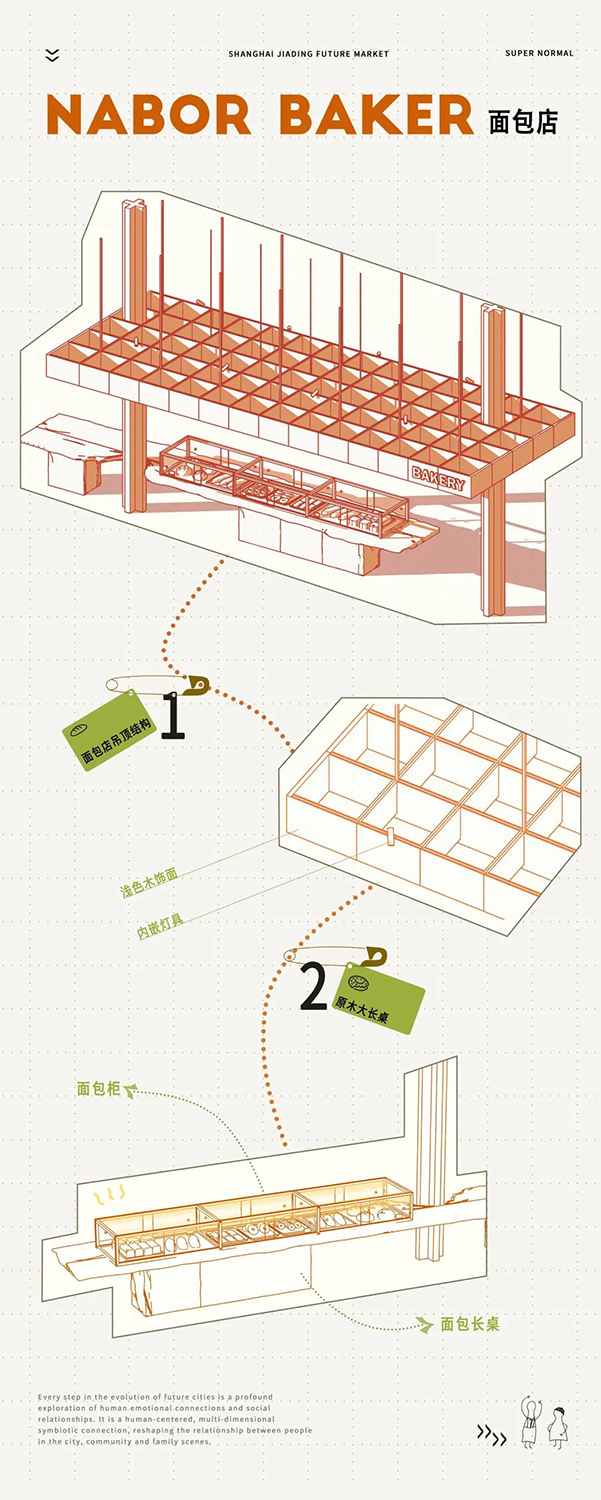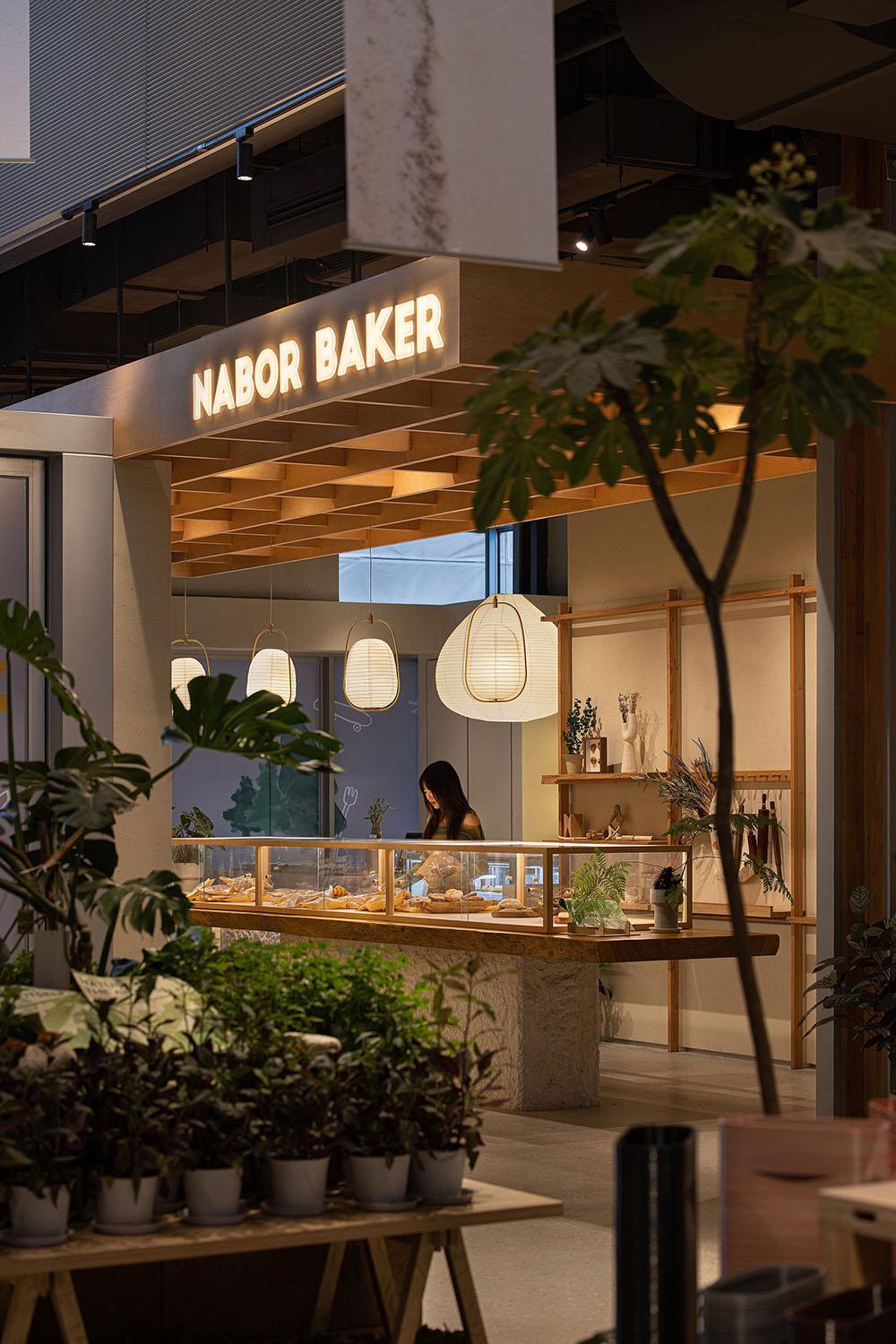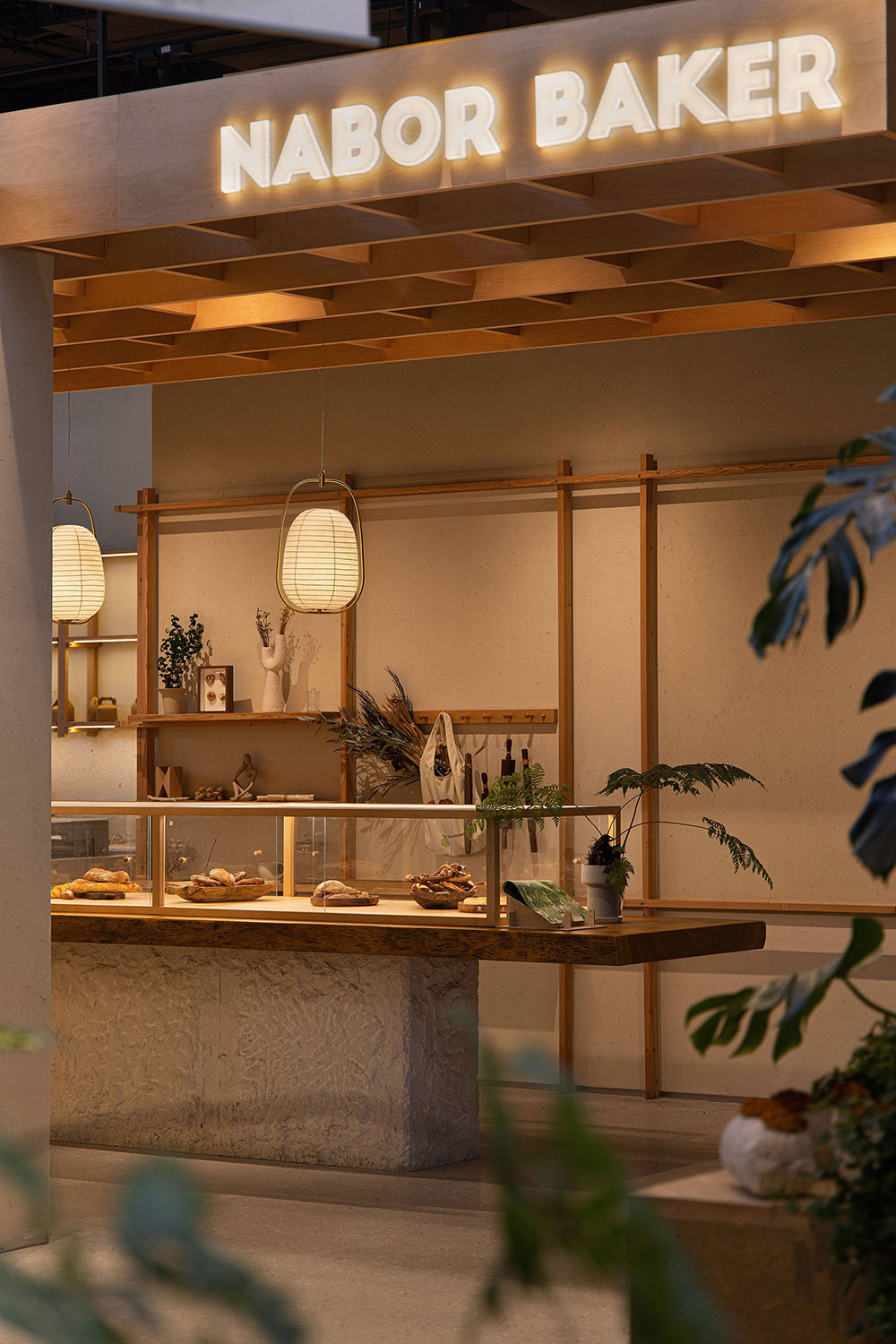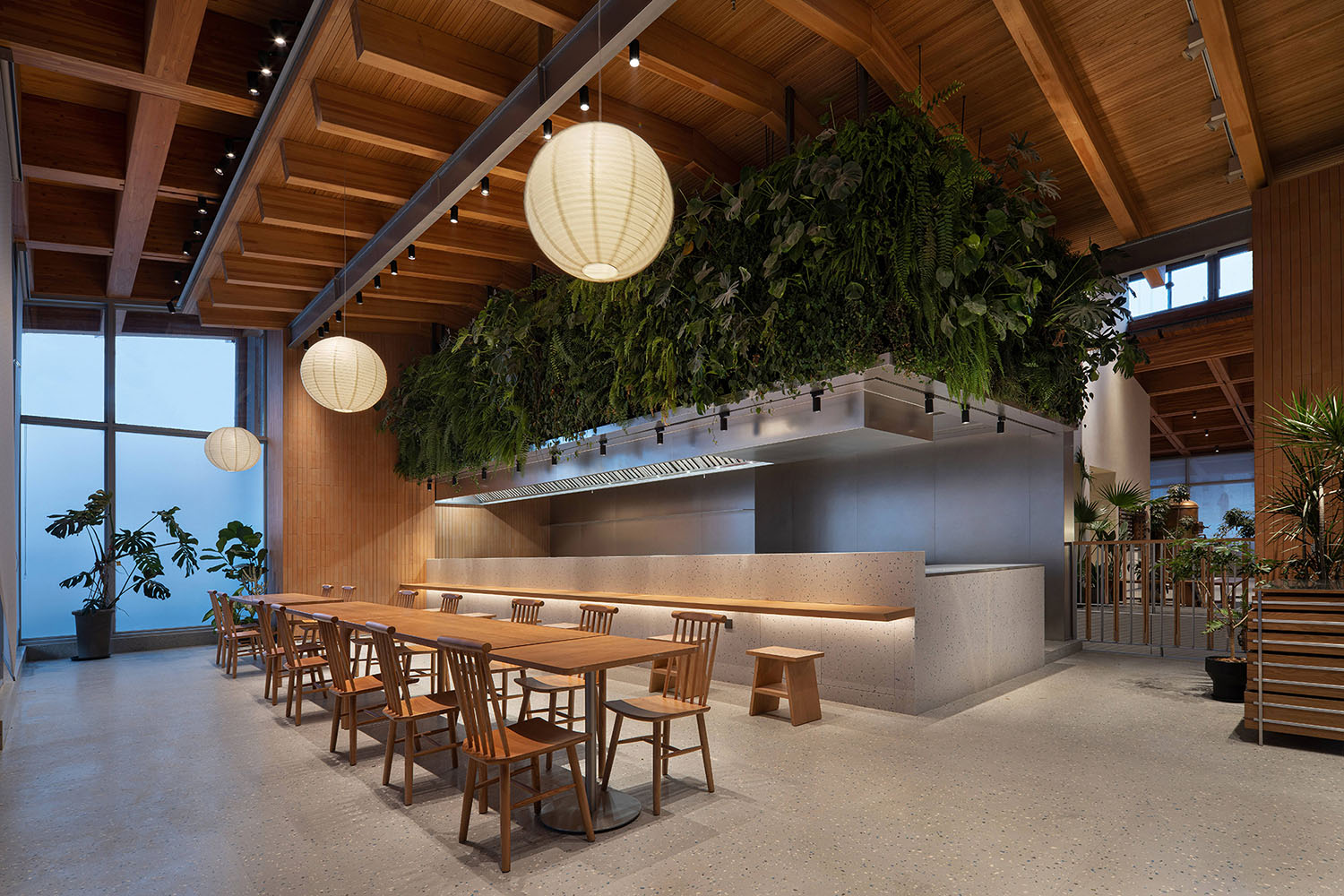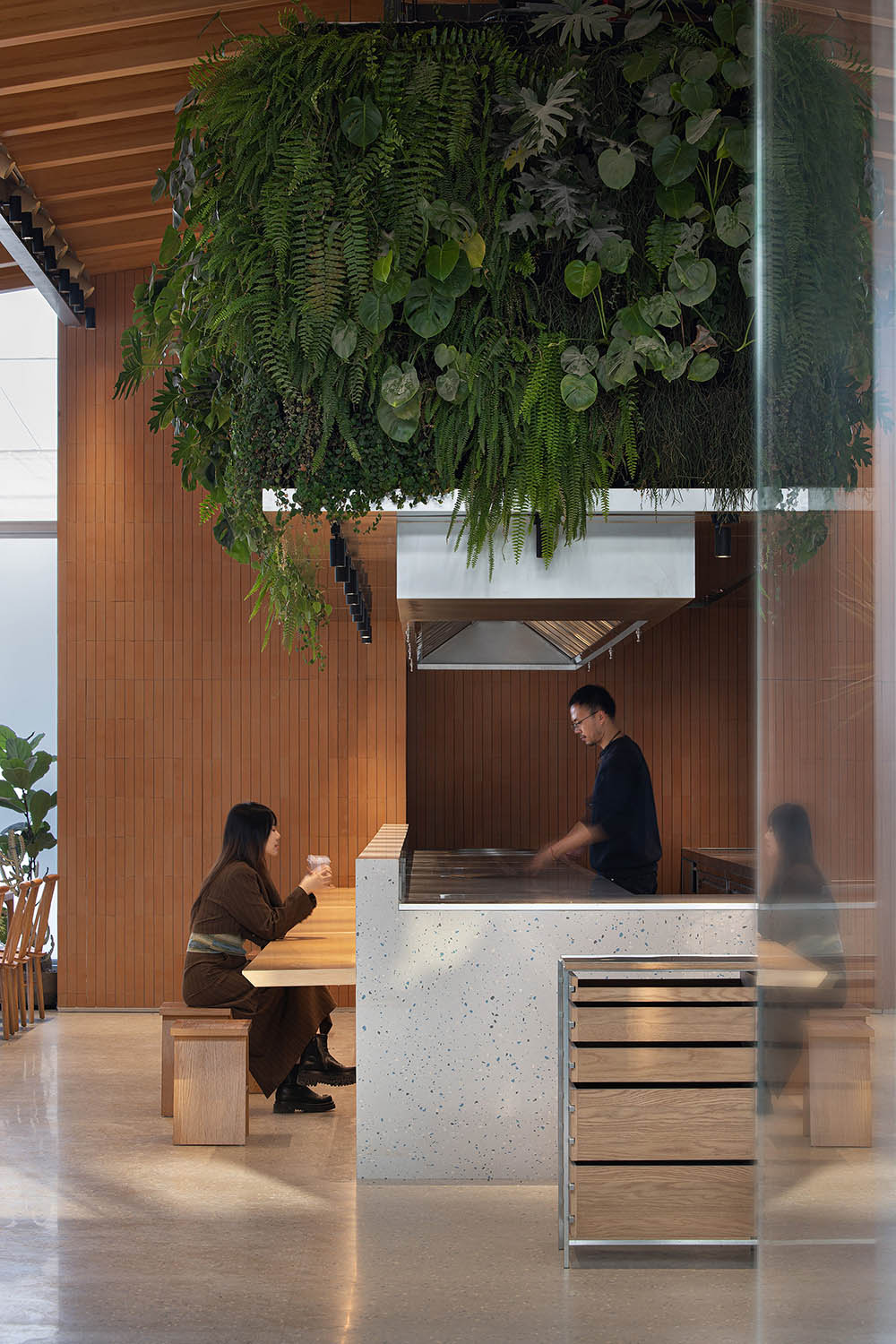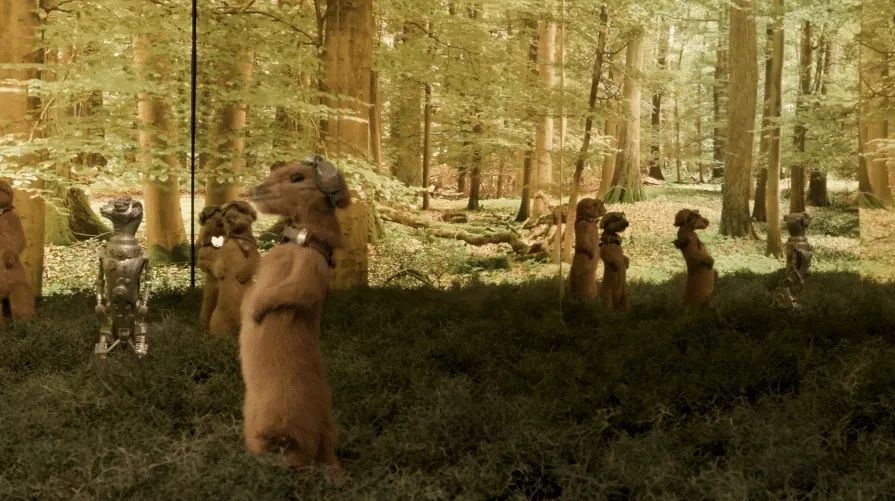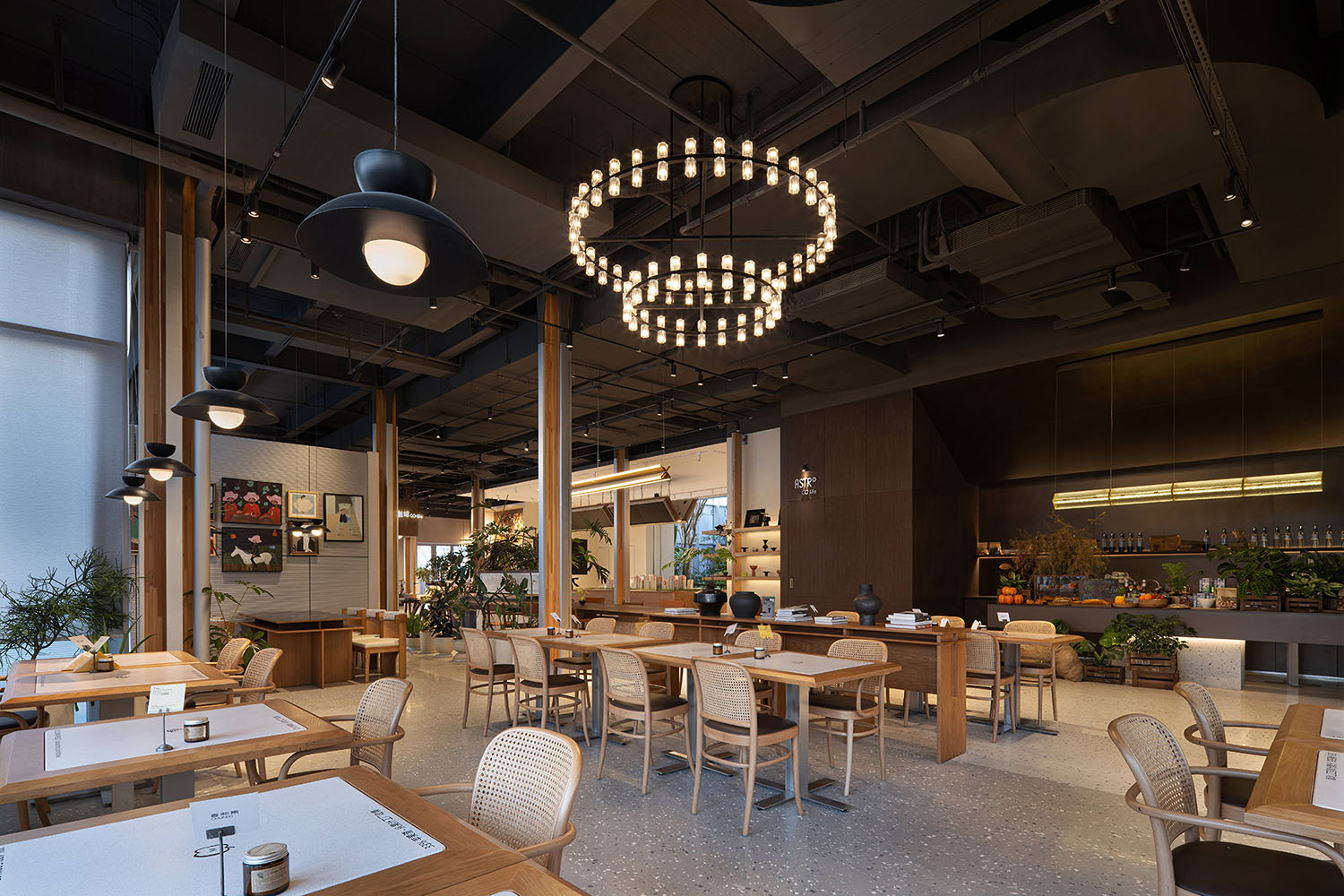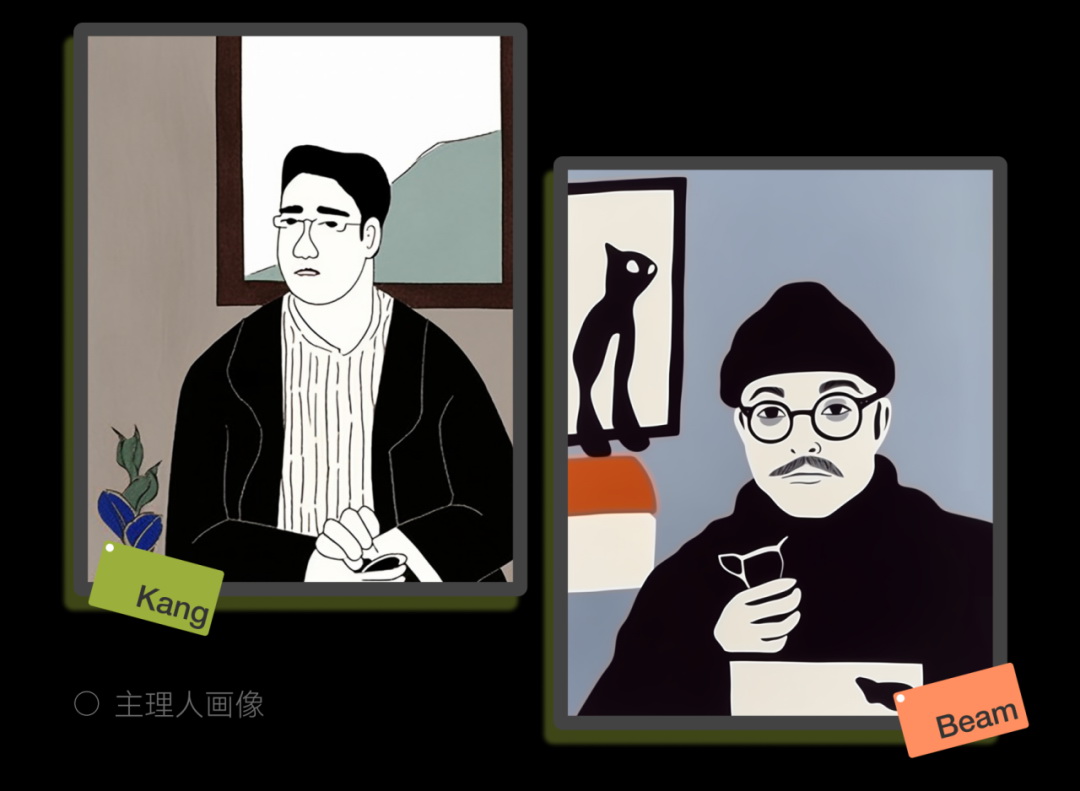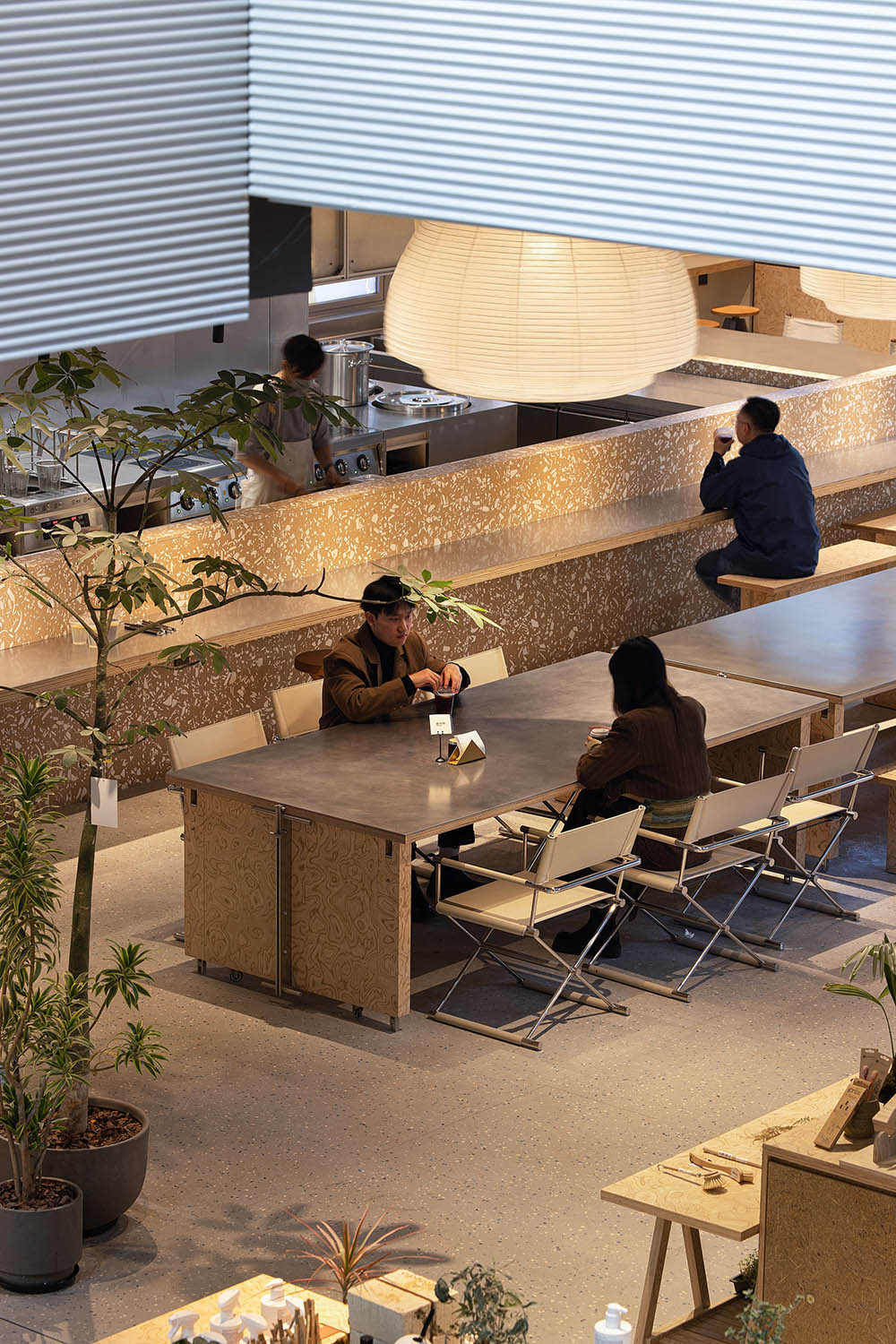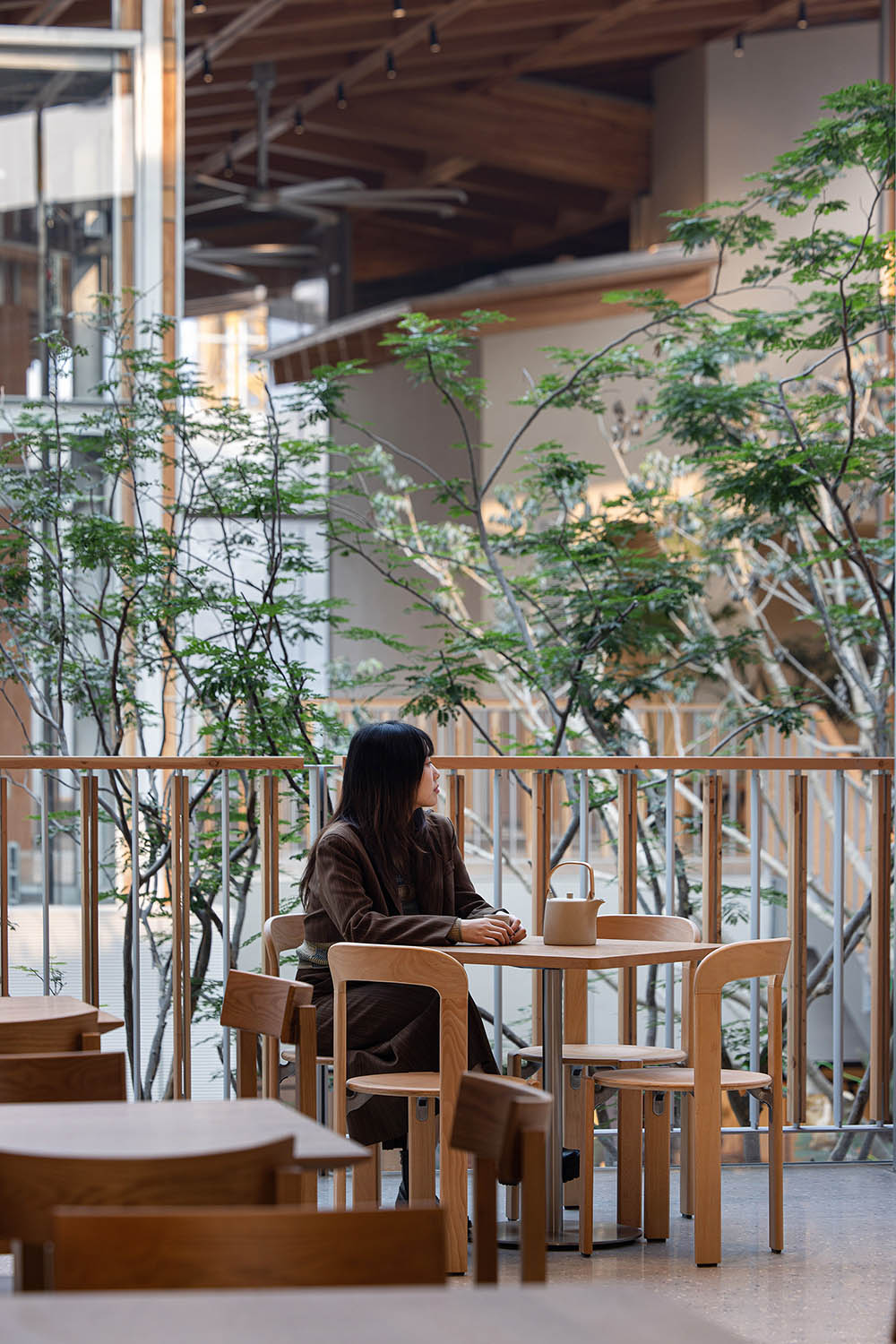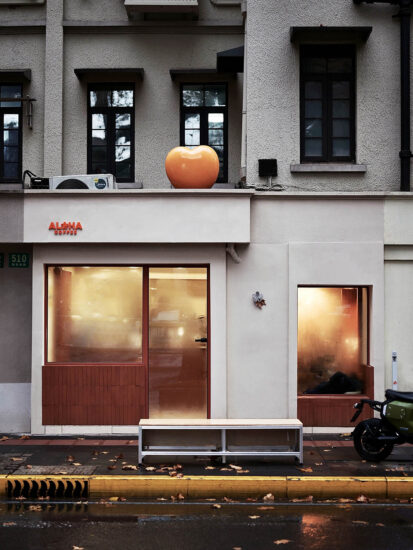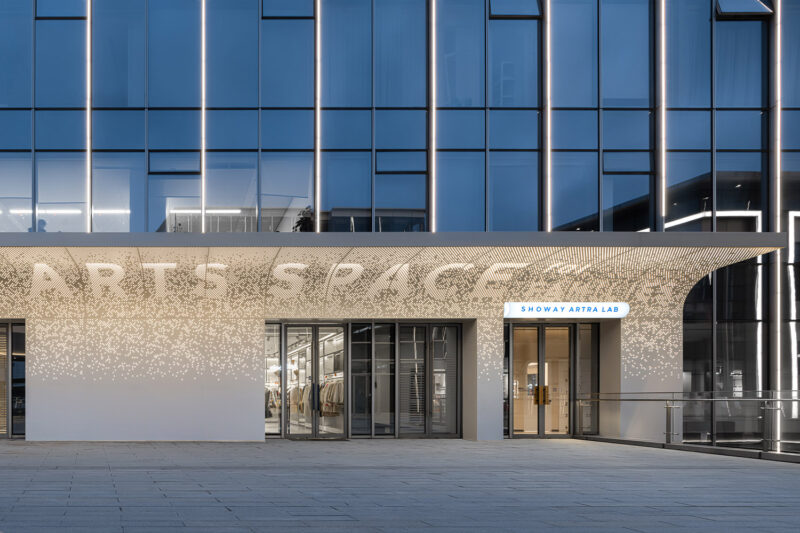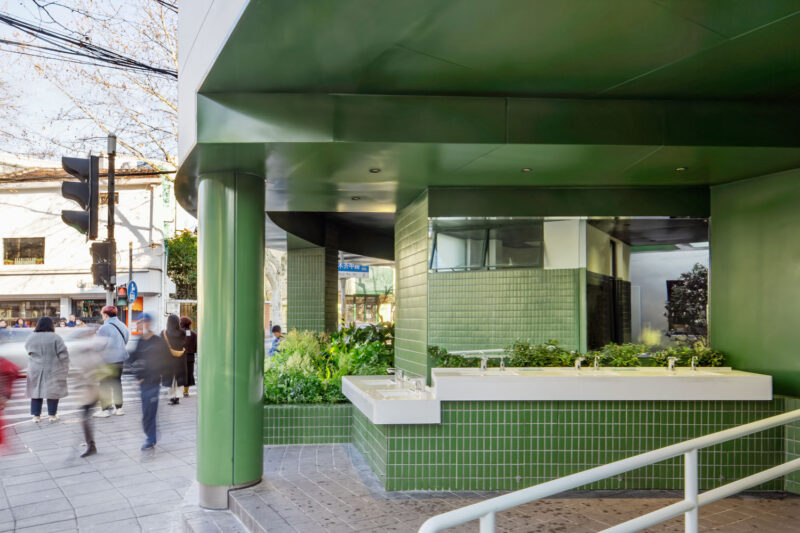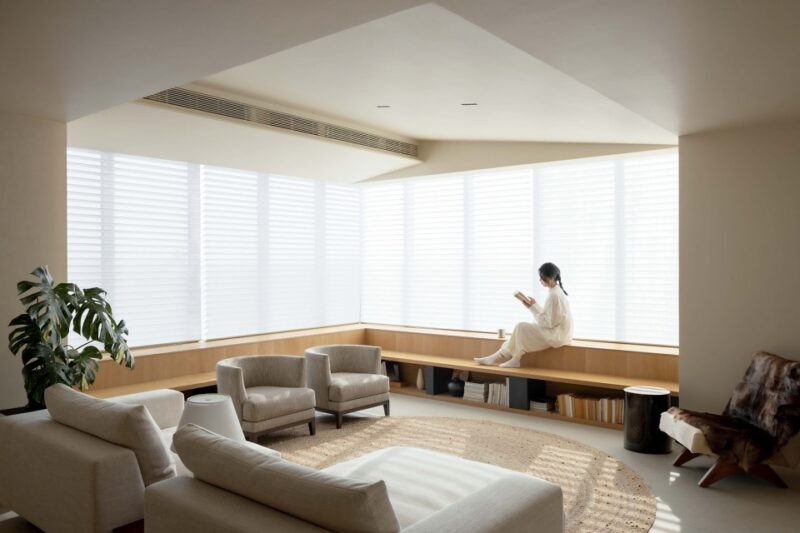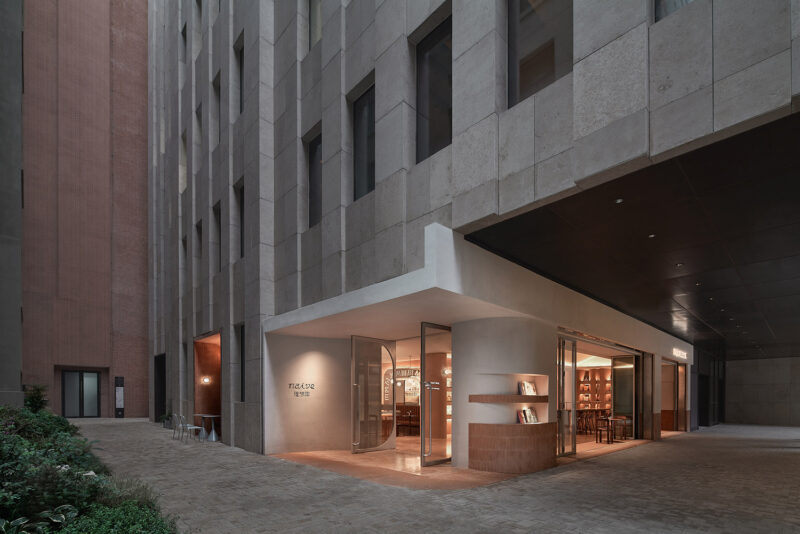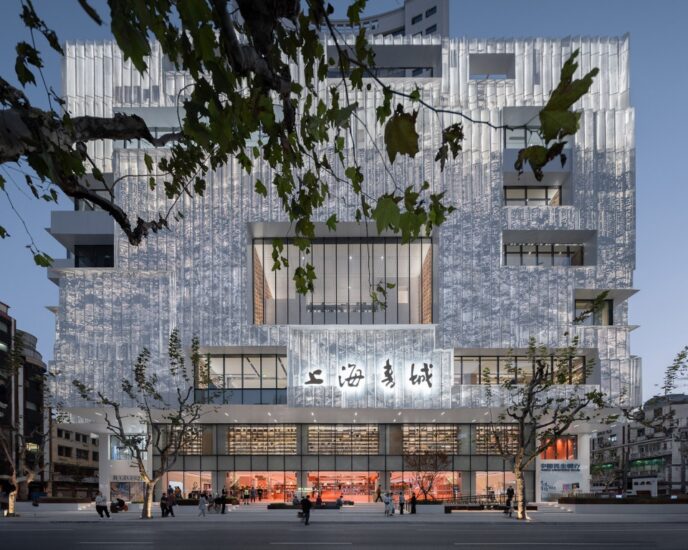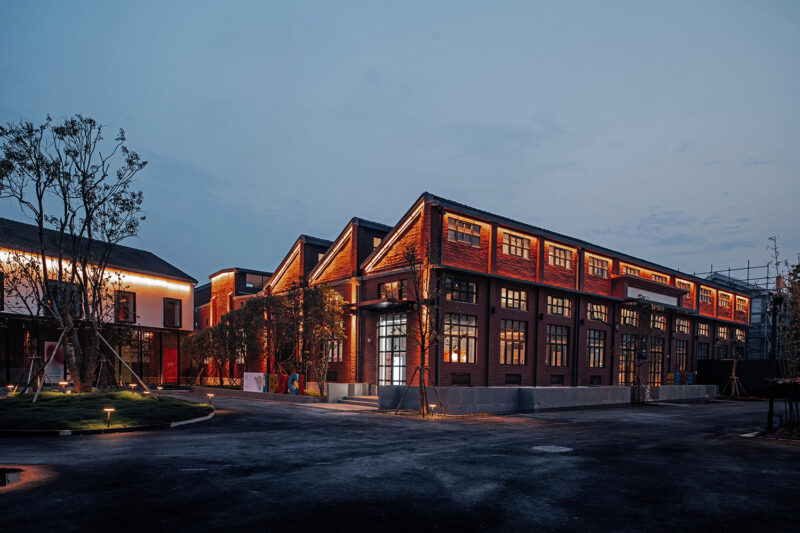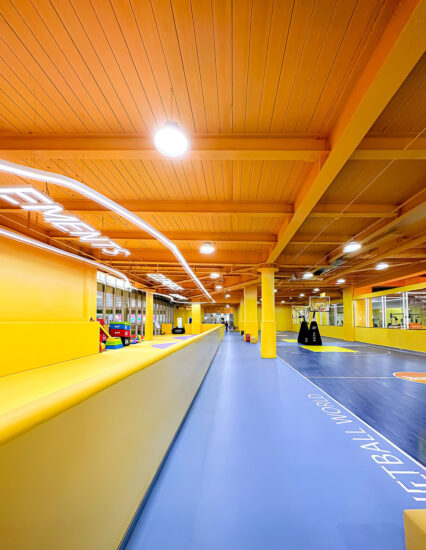超級平常 x 春熙集 :回歸日常,理想社區建構實踐
Chunxi By Super Normal Design
An ideal community hub seamlessly integrated into everyday life
∇ © 超級平常 NEXUS超級十字路口 插畫師魏唐辰希
“設計創造的空間,最終容納的是生活的日常,在這些日常中所創造的有溫度與情感的記憶,是最值得關注的要素。”
“The creation of space fundamentally aims at accommodating daily life, and the warm and sentimental moments from the daily routines, which are key considerations in space design.”
幾年特殊時期過後,居住這件事出現了一些有趣的變化。
In the wake of the COVID-19 pandemic, people’s outlook on living has undergone intriguing transformations.
隔絕的經曆讓原本忙碌的城市居民重新“看見最初五百米”,正如人類學家項飆所早已觀察到的當代城市生活病結——當我們忽略了附近的生活和陌生人,會感到生活失去了控製。
The isolation during COVID-19 quarantine prompted city residents to reconnect with their immediate surroundings, echoing anthropologist Xiang Biao’s concept of “the first 500 meters,” who observes that disconnection from our environment and others can leave us feeling adrift.
∇ © 理想之地 春熙集
對於個體來說,人們開始嚐試關注身邊的人與生活,而在城市發展中,當下許多有前瞻性和引領性的開發商陸續轉型為“城市服務商”,同樣不約而同地洞察到居民看向日常的目光,以及去中心化居住地意識的重新回歸,思考用不同的方法,去實踐社區的營造,而不拘泥於指標意義上的“配套”。
As people are increasingly seeking connection with others, visionary property developers are transforming into “urban service providers.” Their shift involves discerning residents’ daily needs for communal spaces, and creating truly community-centric facilities.
嚐試從城市和社區角度出發思考有機地優化城市建設,改變城市功能性過剩、生態性社區性不足的局麵。
Developers are striving to organically optimize urban development from the perspectives of urban functions, ecology, and community.
∇ © 理想之地 春熙集
不再僅僅建造封閉式小區,不再設置強烈的邊界,讓人們回歸溫暖的日常,藉由生活尺度的轉變讓大家重新感知到“消失的附近”。重新建立鄰裏關係,讓社區回歸,讓社群萌芽。
Instead of constructing gated communities, real estate developers tend to removing the boundaries. The goal is to encourage residents to rediscover their immediate surroundings, nurture neighborhood relationships, and energize community life.
∇ © 理想之地 春熙集
超級平常的設計思考和角度,也開始從“物質邏輯”向“關係邏輯”轉變。
In light of this shift, Super Normal Design’s design perspective has moved from mere “physical space creation” to “relationship cultivation.”
這些“關係邏輯”最後成為他們設計與空間陳設的方針。超級平常認為,人事物的關係產生“信息”,而設計的課題在於編輯這些信息,將其創造性地重組,設計的思考邊界也因此拓展。
This new approach guided all design and furnishings solutions in this project. Super Normal Design perceives space design as creative reorganization of “information” derived from the relationships of people and things, which necessitating holistic design thinking.
從前期策劃開始介入,參與各專業的設計和決策。超級平常所看到的社區商業,不是一個長成什麼樣子的空間,而是其中的居民和主理人們,會有怎樣的生活。於是,有了這樣一種形態的春熙集。
The design team engaged in decision-making of the project since its early planning stage. Instead of shaping the physical form of this community-rooted commercial space, they prioritized relationships among residents and businesses to foster an ideal of community life.
01 超級十字路口
嘉定未來新城立於理想之地的春熙集
Chunxi – A super intersection
嘉定未來新城是中建與萬科在上海合作的城市大盤,也是萬科未來城市理想單元探索計劃的第一個落地項目,業主給這個項目命名為“理想之地”。
Jiading Future New City is the inaugural project of Vanke’s IUFC program in Shanghai, developed in collaboration with CSCEC. This property development is also known as NEXUS, which stands for “nature, energy, Xanadu, units, and society.”
理想之地,展望的不隻是技術未來,更是人文未來,旨在構建多維共生的關係連接。在14萬㎡的土地上,以“活力、低碳、智慧“為核心價值觀,以10分鍾步行範圍為單元,打造一個個超級十字路口,集住宅、街區、辦公、商業等N個複合業態,是海派市區生活在市郊綜合大盤的複刻實踐。
Embracing core values of “vitality, low carbon, and intelligence,” the 140,000-square-meter development envisions a technological future, and a humanistic future, aiming to build multi-dimensional symbiotic connections. Master planned with multiple 10-minute walk units, it creates several super intersections integrating apartments, street blocks, offices, businesses, and other varied operations, which sets a model of suburban Shanghai-style transit-oriented development.
∇ © 超級平常
春熙集,是超級十字路口四個社區業態的第一個落地呈現,是社區與市集的一次跨界融合的實踐。
Chunxi, as the first built super intersection in the NEXUS community, integrates hybrid businesses, and exemplifies the fusion of community and market.
∇ 春熙集功能分析圖 © 超級平常
02 這一碗粥.才是護城河….
食物的幸福鏈接讓社區更有煙火氣
A bowl of congee matters…
The joy brought by food makes a vibrant community
一個可謂先鋒的新城規劃示範,卻選擇以一花一草,一茶一飯來呈現社區生活的日常。如何讓素不相識的鄰居坐下來聊聊天?怎樣讓社區更有煙火氣、街區更有人情味?
The design places emphasis on seemingly simple elements like greenery, culinary offerings, and tea gatherings, all aimed at rekindling daily life within a pioneering community situated in the new town. The focus is on fostering interactions among neighbors and cultivating a community imbued with a lively atmosphere and kindness.
∇ © 理想之地 春熙集
春熙集,用“食物的幸福鏈接“為線,串起社區與市集。什麼是市集,一個新鮮的老地方。熱愛的人,有趣的事,新鮮的物,取“SHI”音發想,四音不同,寓意不同。
Chunxi realizes an integration of community and market, facilitated by joy derived from culinary offerings, encouraging the residents to encounter new people and things. Its design revolves around four themes – poetry, authenticity, history, and event.
詩 Poetry
詩意的棲居,天然、健康、低碳。
A poetic community environment that is natural, healthy, and low-carbon.
實 Authenticity
真實的體驗,親近的開放廚房,真實的業態,美味的食物。
An authentic experience brought by open kitchens and savory culinary offerings.
史 History
曆史的回應,用策展的方式,優雅地展示地塊的過去與未來。
A response to the local historical context through curated scenes that display the past and the future of the site.
事 Event
引領價值“事”件,所有一切的方式和方法,都將會激發居民社區生活靈感,引導社群共創場景的湧現。
Facilitating significant events to inspire and foster co-creation within the community.
03 活力、低碳、智慧
理想之地,理想的室內設計
Vitality, low carbon, intelligence
作為理想之地社區計劃的一部分,超級平常希望春熙集的室內設計可以充分回應大盤的核心價值觀:活力、低碳、智慧。
The interior design of Chunxi – a part of the NEXUS community, is intended to align with the development’s core values of vitality, low carbon, and intelligence.
∇ © 超級平常
#智慧
Intelligence
∇ 春熙集總平麵圖 © 超級平常
超級平常首先考慮的是融合共生的業態規劃。一層定義為“食物市集”,讓餐飲場景與市集場景融合,與內外景觀充分互動,優化店麵的靈活度與多樣性,擴大外擺空間。
The design team’s primary consideration in interior design was to create a layout that facilitates symbiosis of different types of businesses. The first floor, defined as a “food market,” seamlessly merges dining and shopping areas, optimizing flexibility and expanding outdoor seating areas for tenants.
∇ © 超級平常
通過中央廚房的設置和運營動線優化的前置,擴大一二層店鋪的經營範圍,實現開放式廚房觀賞性的同時,讓顧客與主理人更近距離地充分互動。
A central kitchen with an optimized operational circulation offers more potential for first and second-floor businesses. The open kitchen design enhances visual appeal while fostering closer customer interaction with restaurant owners.
∇ © 超級平常
二層定義為“食物社區”,希望在食物與社群之間架起更多橋梁,利用分時使用的策略,讓更多與食物有關的社區活動在這裏發生。
The second level, conceived as a “food community,” strengthens connection between food and the community. A time-sharing strategy is employed, aiming to facilitate diverse food-related community activities in this space.
∇ © 超級平常
為了實現這個目標,超級平常與致正建築緊密合作,通過優化二層原有店鋪範圍和各類管井的位置,弱化二層各業態的邊界,融彙成為一個給未來預留足夠可能性的食物社區,梳理場景,以退為進。
To achieve this, Super Normal Design collaborated closely with Atelier Z+ to optimize the original space layout and positions of pipelines on the second floor, to weaken the boundaries between varied businesses and foster a “food community” capable of adapting to future possibilities.
∇ © 超級平常
#低碳
Low carbon
∇ © 超級平常
在室內設計中主要體現為低物耗的傾向。在春熙集的零碳咖啡,超級平常與鑽研回收再造材料環保材料商OOOBJECT合作,用不同的回收物料,比如咖啡渣、蘋果渣、檸檬渣、番茄渣製作了“零碳咖啡”的所有咖啡桌麵和吧台飾麵。
The interior design emphasizes minimal material consumption. For the zero-carbon coffee shop, Super Normal Design partnered with eco-friendly material supplier OOOBJECT, using recycled materials like coffee, apple, lemon, and tomato grounds as finishes of tabletops and the bar counter.
∇ © 超級平常
在“春熙集”中,利用回收的鮮切花殘渣製作的鮮花板、舊貨箱及環保物料,通過可拚接組合的方式,設計成漂亮且靈活的中島展台。
Boards made from recycled fresh-cut flower waste, old cargo boxes, and other environmentally friendly materials are creatively employed to craft the display islands through splicing and combination, achieving both aesthetics and flexibility.
∇ © 超級平常
在“古穀粉麵檔”的吧台,超級平常收集了“潮州楓溪”的白瓷碎片與大理石粉壓製成人造石,環保的同時也隱喻粉麵和吧台之間的聯係。
At “Gugu Restaurant,” the design team repurposed white porcelain fragments from Fengxi, Chaozhou, along with marble powder, to craft artificial stone for the bar counter, symbolizing the connection between flour and the countertop in noodle making.
∇ © 超級平常
同樣的邏輯,在“JimJimShop”的陶瓷器展台中,超級平常也用了莫來石耗片中島表達展台與展品的關聯,並嚐試使用一些中古家具來作為店鋪的家具。
Similarly, at “JimJim Shop,” the designers applied mullite ceramic to the island, to accentuate the dialogue of the display stand and exhibits, while incorporating vintage furniture into the store.
∇ © 超級平常
麵包店的吧台用一種帶雜色的米黃原石的石皮來實現一種麵包表皮鬆軟質地的感受,通常這些原料石皮都用作廢棄物,可惜了石材最有性格的部分。
At the bakery “Nabor Baker,” the bar counter features variegated beige rough stone surfaces to echo the soft texture of bread, reusing raw stone surfaces – which are unique but typically discarded as waste.
∇ © 超級平常
二層“山椒鍋物”的綠化牆,也複用了原來當作間隔一二期項目的綠化隔離牆的設備和植物。
The greenery wall of the “Shanjiao Pot” stall on the second floor repurposes equipment and plants initially used as a separation wall between the first and second phases of the project.
#活力
Vitality
回應”活力”的關鍵在於空間所具備的觸發和承載事件的能力,這也要求超級平常所需要運用的思維來策劃空間,創造靈活自由的動線。所有的展陳道具方便移動拆裝,實現動態的複用,同時在機電係統規劃上考慮了空間複用的可行性。
The key to fostering “vitality” hinges on creating dynamic spaces that catalyze and accommodate activities. This involves thoughtful space layout with a flexible circulation. Display props are designed for easy mobility, disassembly, and reassembly to facilitate dynamic reuse. The planning of electromechanical system emphasizes space reuse feasibility.
∇ © 超級平常
在項目中超級平常利用AI做了兩個藝術裝置,但卻選擇了讓觀眾無法覺察的方式放置在空間之中。其中一個是在春熙集入口處的機械狐獴,這個裝置幻想一種未來的未來,或許是人類之後的未來,或許是人類脫離母星,將生態自由歸還地球的未來。而其中那幾十隻造型為異的碳矽一體的狐獴,就是AI生成的作品。
Two AI art installations subtly enrich the visitor experience. The first, a mechanical meerkat at the site’s entrance, imagines a future without humans, featuring dozens of differently shaped carbon-silicon meerkats generated by AI.
∇ 主理人畫像 © 超級平常
另一個AI作品藏在一麵畫牆上,其中有兩幅人像就是春熙集的兩個主理人,Kang和Beam作為原型繪製的肖像神似且有趣。以這樣不為人知的方式應用AI功能,實際也是在表達超級平常的觀點和希望:AI雖然帶來下一輪的技術革命,但它可能也會自然地融入社會生活,造就新一輪的活力。
The second AI-generated artwork showcases portraits of Chunxi’s operational principals Kang and Beam, which conveys the design team’s vision of integrating AI into social life and fostering vitality.
04 用設計的力量創造幸福
用“關係”邏輯替代“物質”邏輯去思考
Enhance wellness through the power of design
這就是春熙集,一個用“關係”邏輯替代“物質”邏輯去思考的社區商業實踐,超級平常期待它從此以後在嘉定新城自然生長,讓社區的人們在此相聚,建立連接,找回生活的煙火氣。
Chunxi, as a commercial hub rooted in the community, is designed in a way that prioritizes resident connections rather than the physical space form, through which the design team hopes to bring people together and cultivate a vibrant community life.
∇ © 超級平常
春熙集的實踐也讓超級平常看到未來對設計師的挑戰性,不僅要“造物”,還必須思考為何造物,除了造物,是否還有其它方式來解決問題,問題的本質是什麼?
Through this project, Super Normal Design has recognized the evolving challenges for designers in the future. It’s more than about creating spaces; it’s about discerning purposes, exploring alternative solutions, and thinking about what’s the core of problems?
社會家庭結構的變化對城市產生什麼影響?
How the changes in social and family structures will affect the development of cities?
情緒價值到底是什麼價值?
What exactly is emotional value?
社會環境如何影響設計?
How does social context influence design?
考慮與自然的關係很重要嗎?
Is it essential to consider the relationship with nature?
∇ © 超級平常
帶著各種或許無關緊要的疑問,超級平常把視線轉向日常,繼續他們的設計實踐,以平常心與常識去創造性的看見,用設計的力量創造幸福。
By delving into these questions, Super Normal Design shifts its focus to integrating design into daily life, leveraging common sense and the power of design to enhance well-being.
項目信息
項目名稱:上海理想之地·春熙集
客戶:上海嘉未來置業有限公司
項目地點:中國 上海
項目麵積:2280㎡
項目時間:2023年10月
室內設計機構:深圳市超級平常空間設計
設計總監:吳敏文
技術總監:陽建勳
主創設計:王創哲
設計團隊:關天達,伍紫薇,餘欣婷,張惠逸,鄧嬈嫻,張澤津,辛思穎,吳柳春,李敏,李澤鍇
軟裝主創:張金玲
軟裝團隊:王榕 孫曉琴 張金鳳
平麵協助:陳曼
建築設計:致正建築工作室
項目攝影:魯哈哈
Project name: NEXUS · Chunxi
Client: Shanghai Jiaweilai Real Estate Co., Ltd.
Project location: Shanghai, China
Area: 2,280 square meters
Completion time: October 2023
Interior design firm: Super Normal Design
Design director: Wu Minwen
Technical director: Yang Jianxun
Chief creative designer: Wang Chuangzhe
Design team: Guan Tianda, Wu Ziwei, Yu Xinting, Zhang Huiyi, Deng Laoxian, Zhang Zejin, Xin Siying, Wu Liuchun, Li Min, Li Zekai
Soft furnishings chief designer: Elf Zhang
Soft furnishings team: Wang Rong, Sun Xiaoqin, Zhang Jinfeng
Graphic design assistant: Chen Man
Architectural design firm: Atelier Z+ (The construction control of the wooden roof structures, the interior roofs of store spaces on 2F, the equipment routing and lighting of wooden roofs, and the interior atrium surfaces were taken charge of by Atelier Z+)
Photography: Lu Haha


